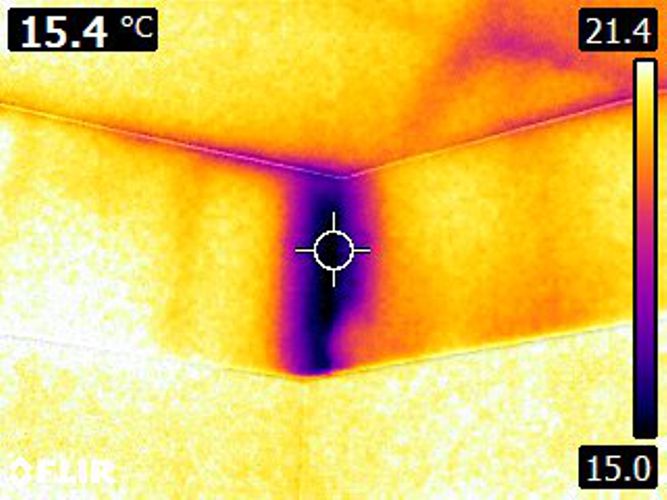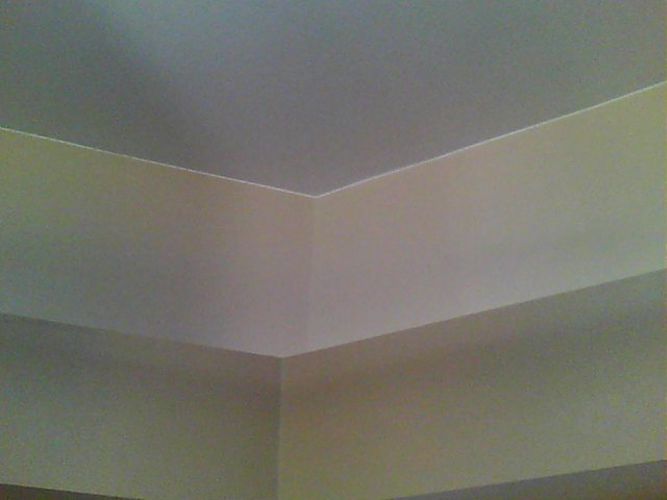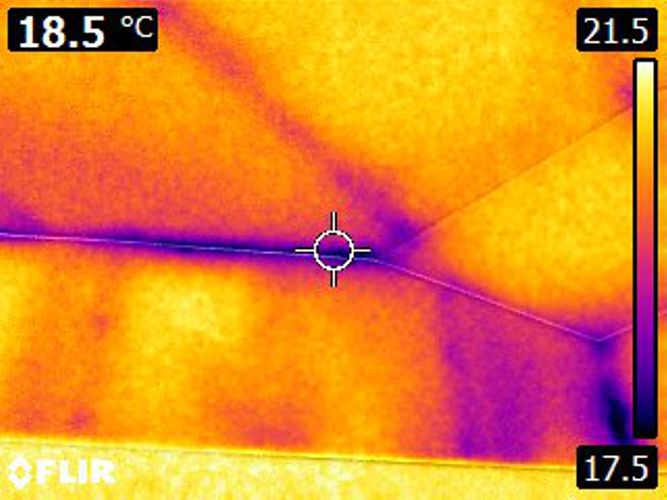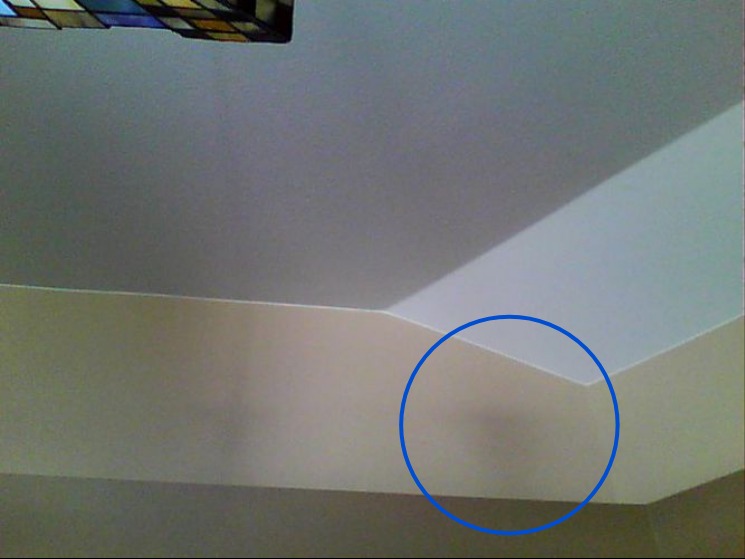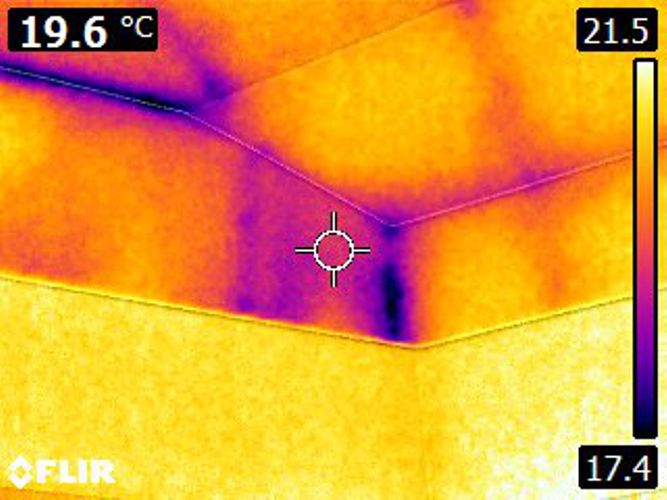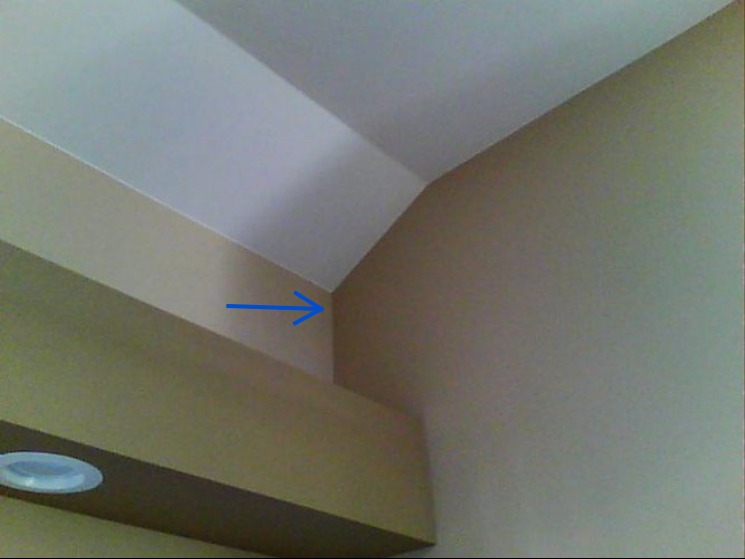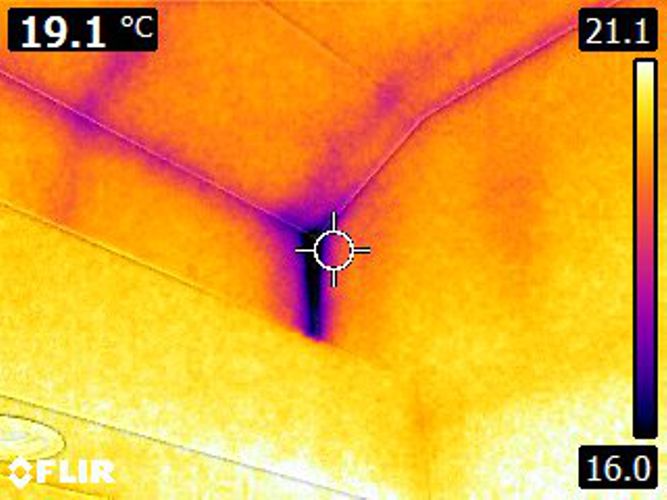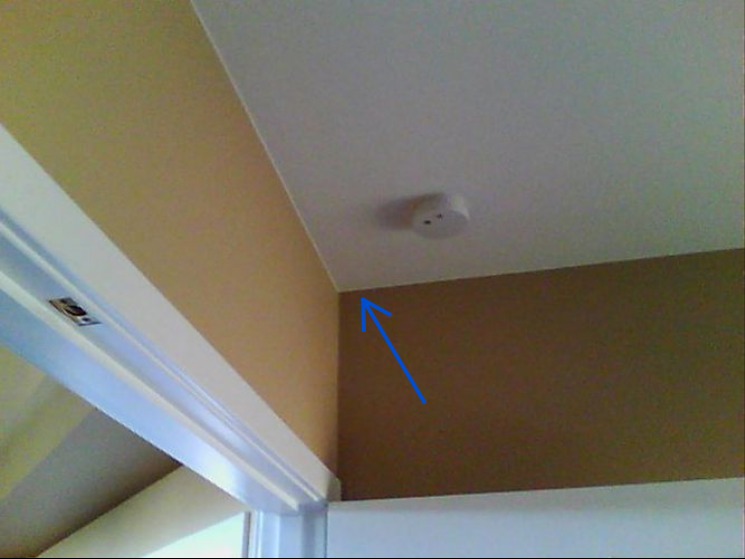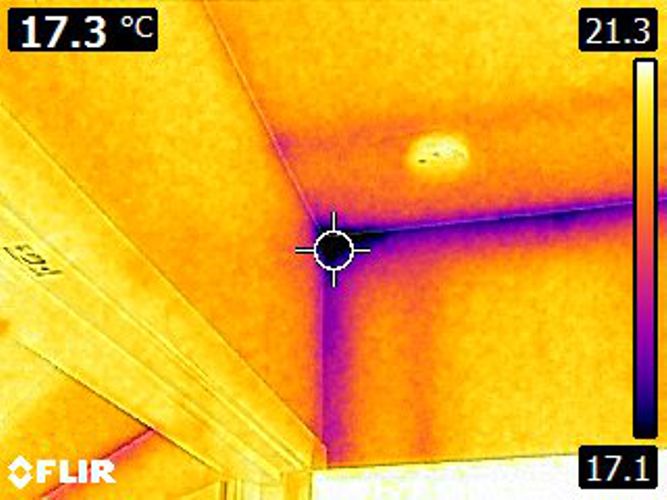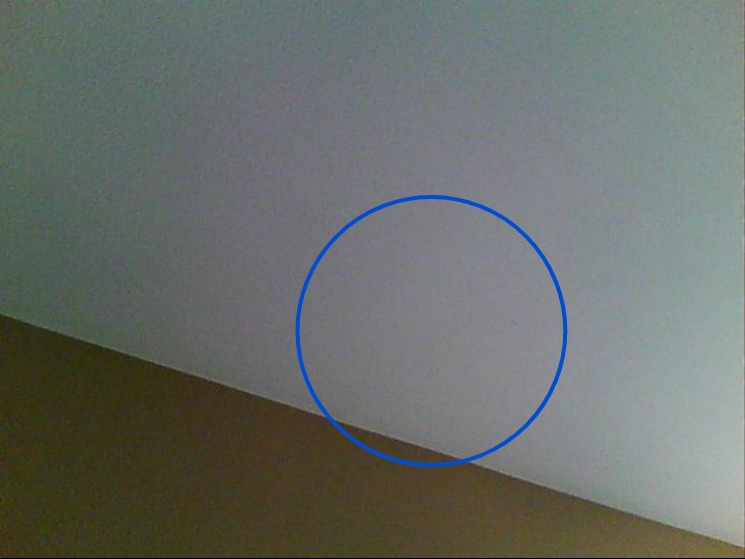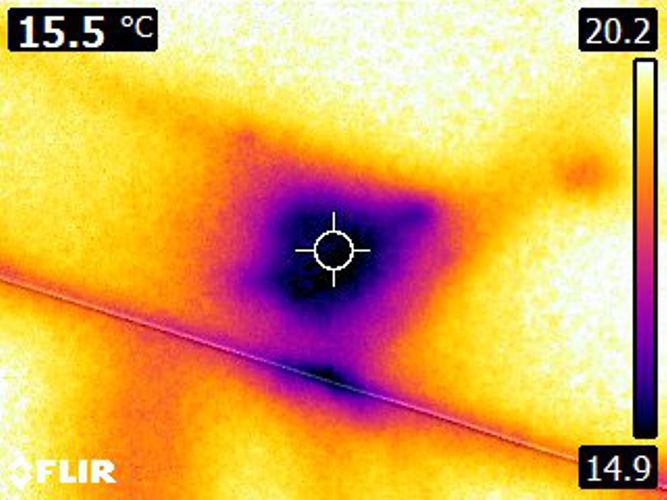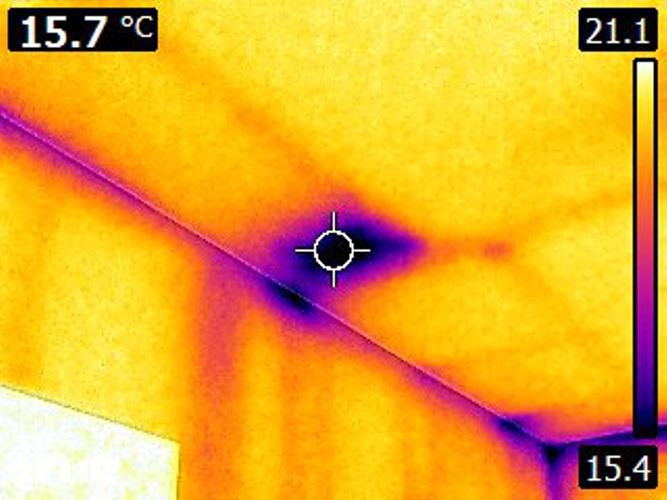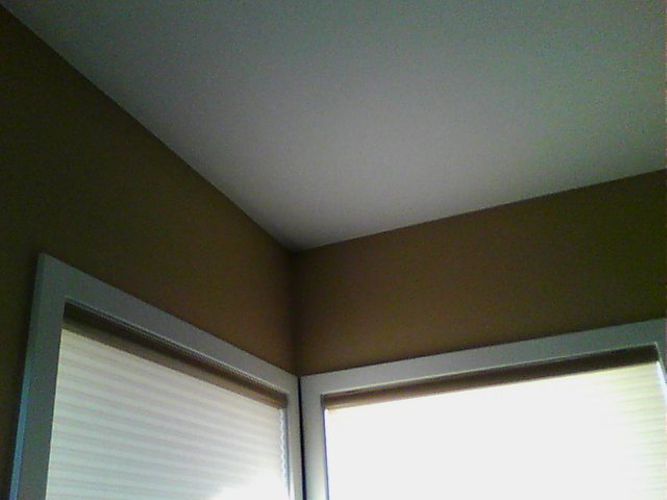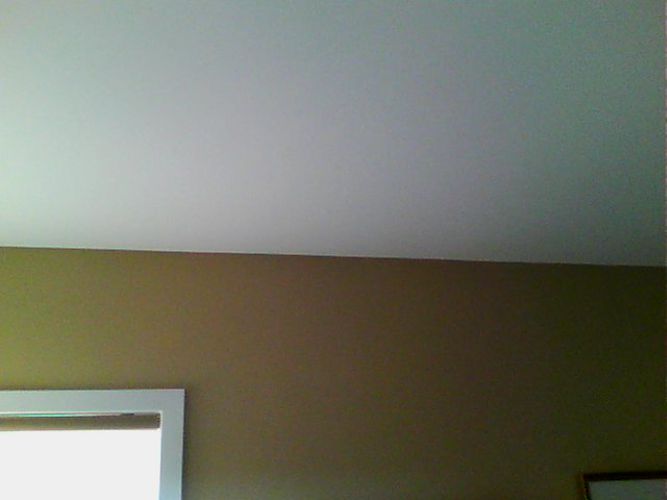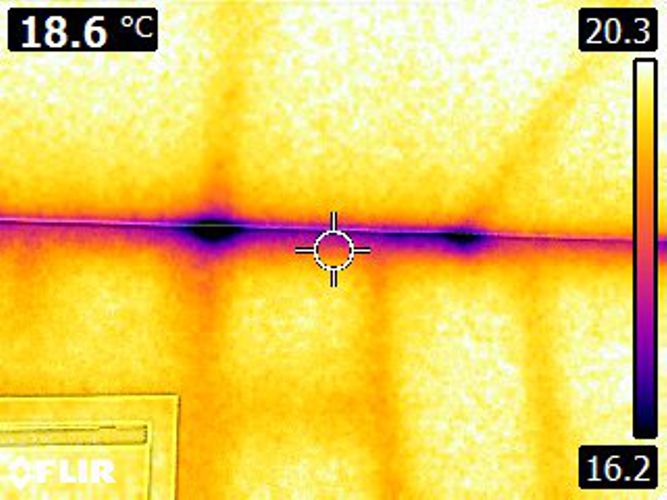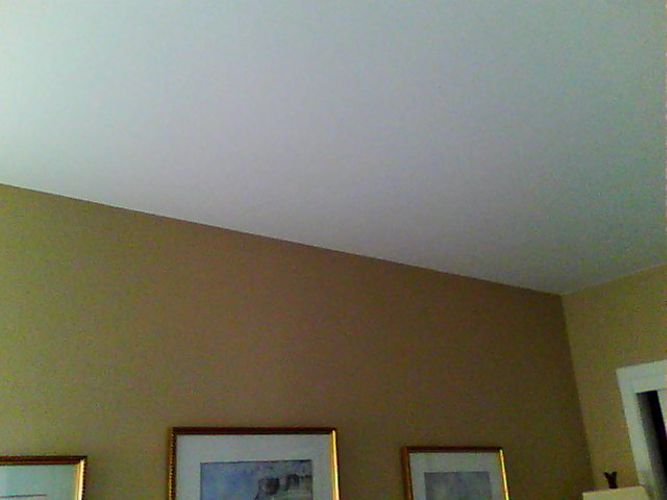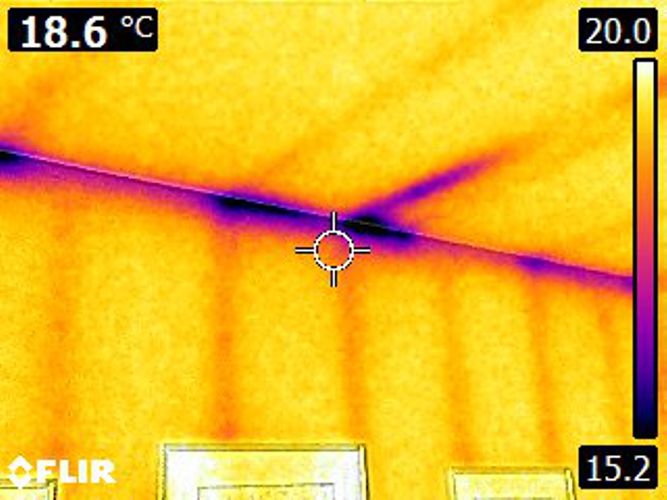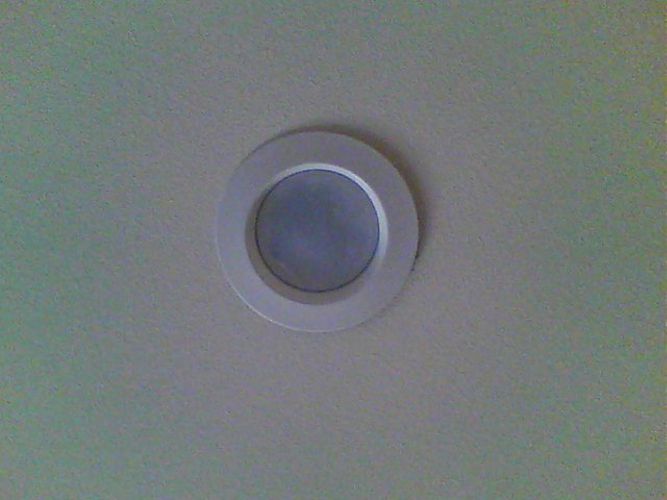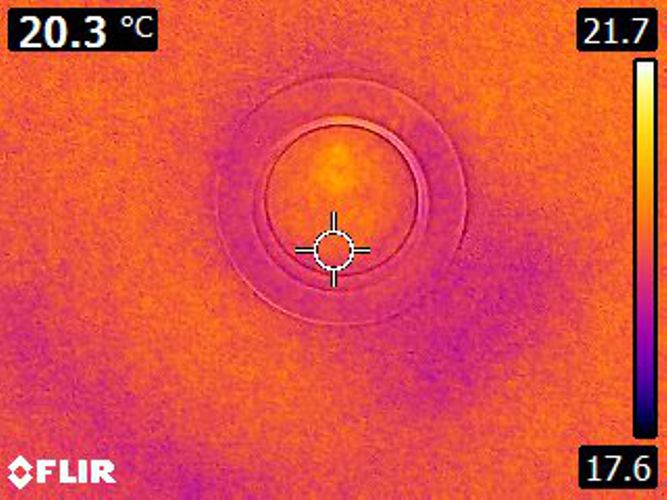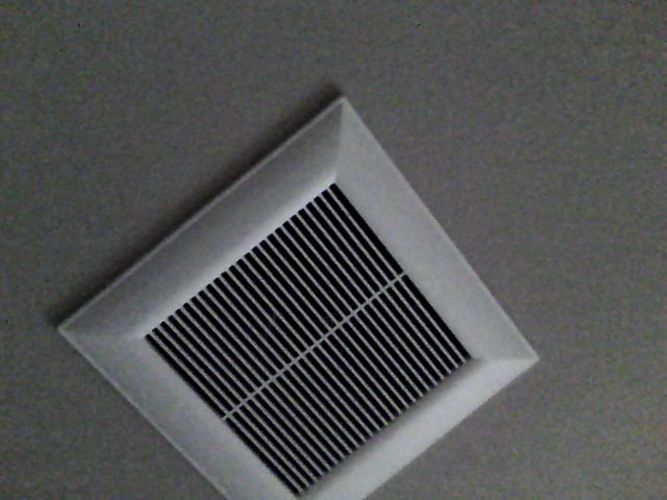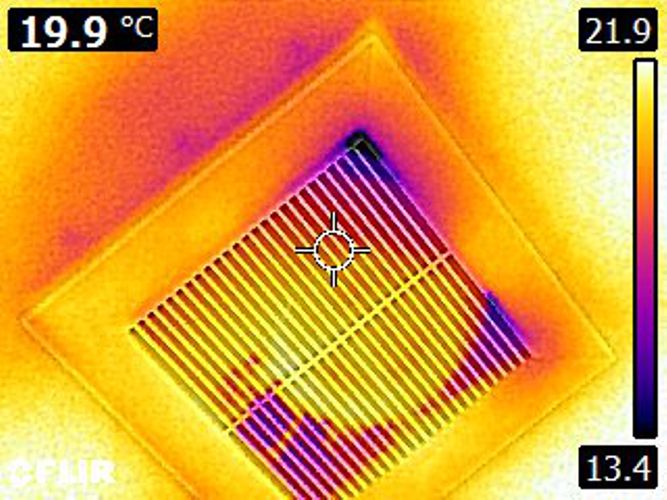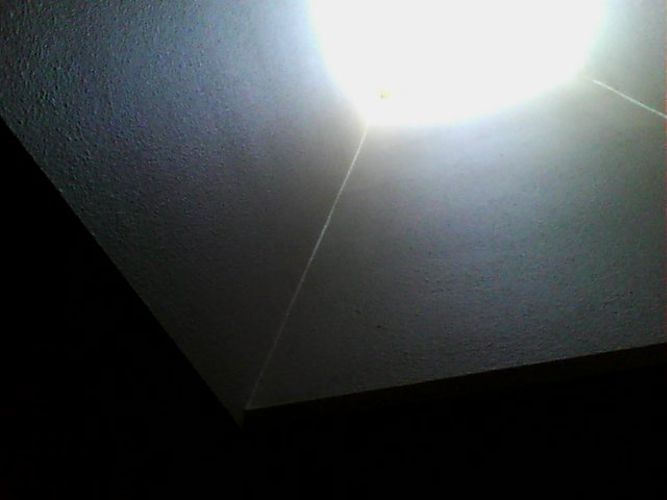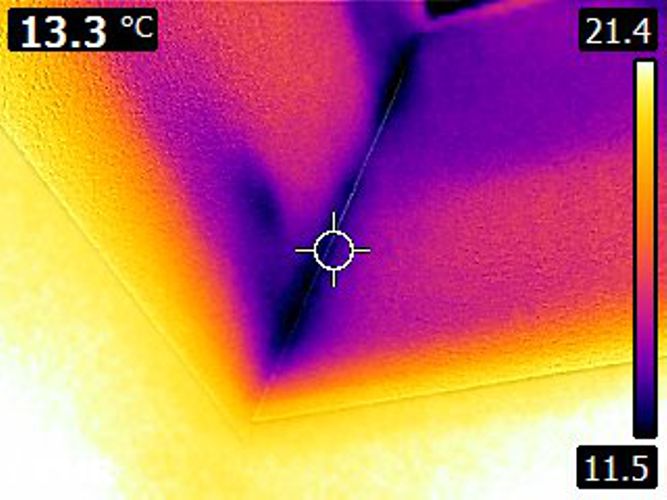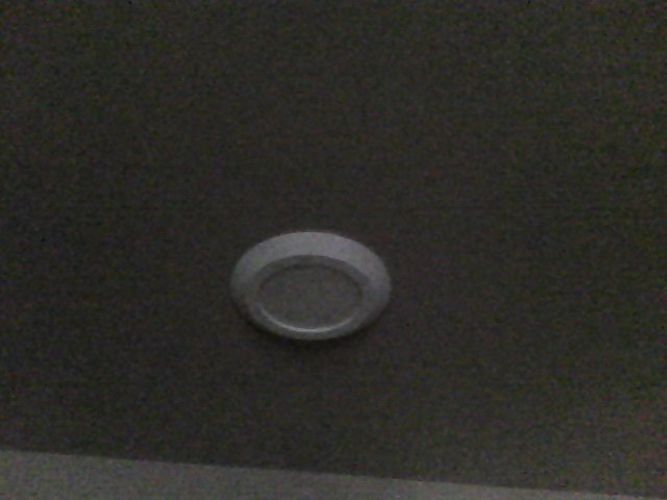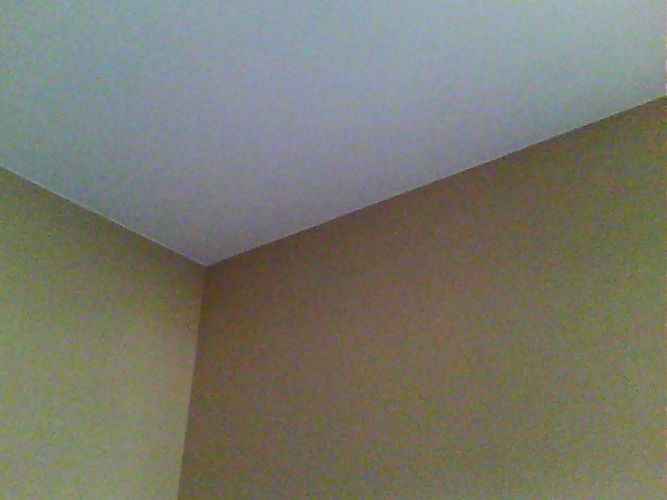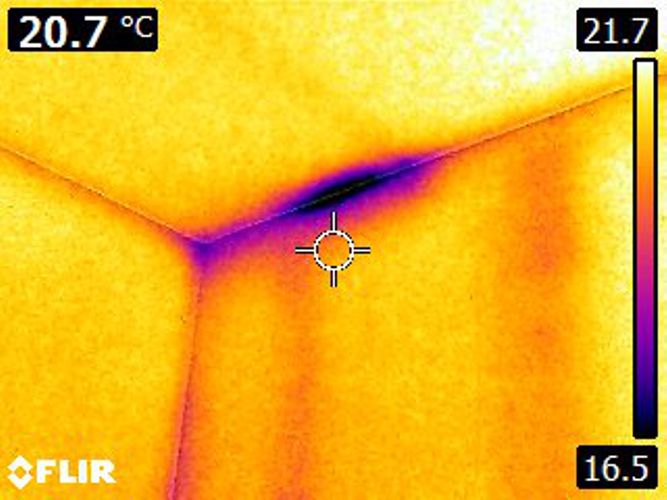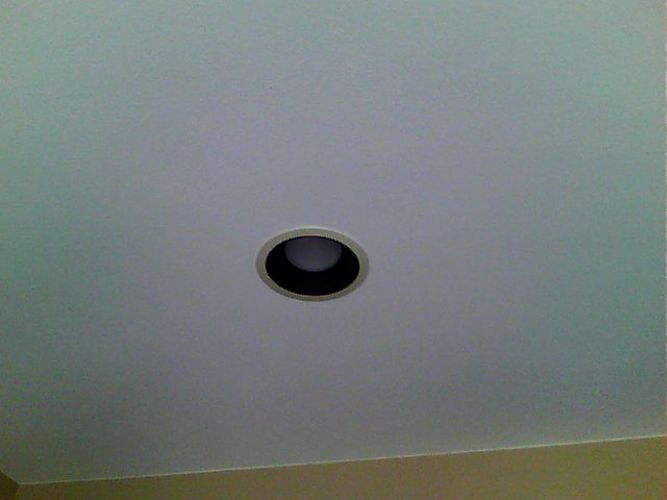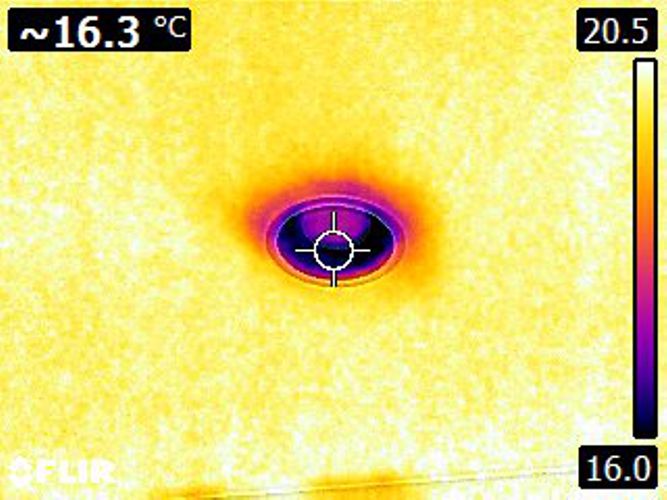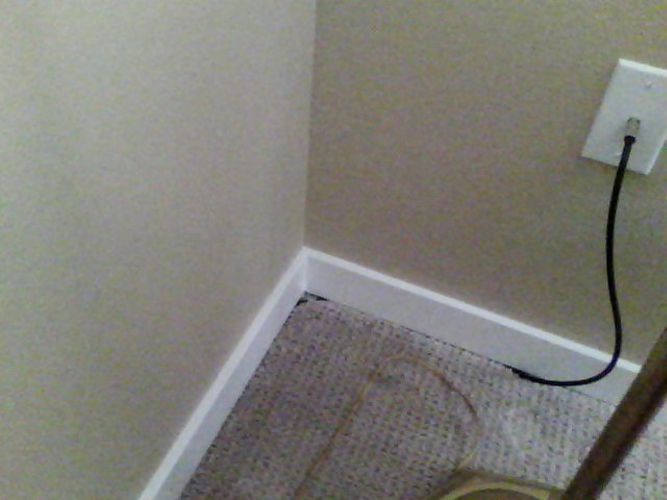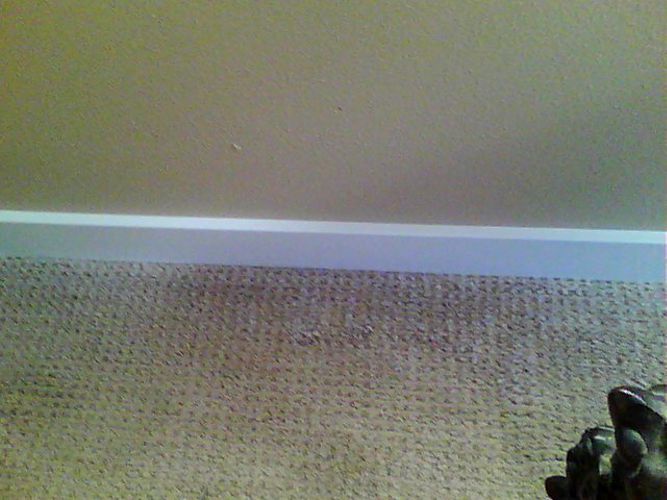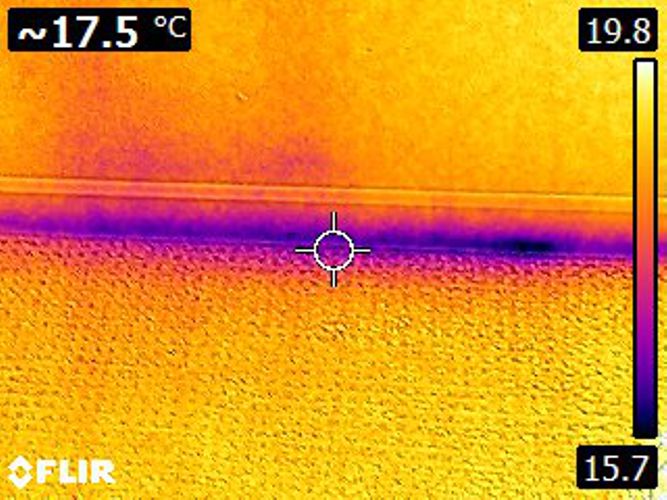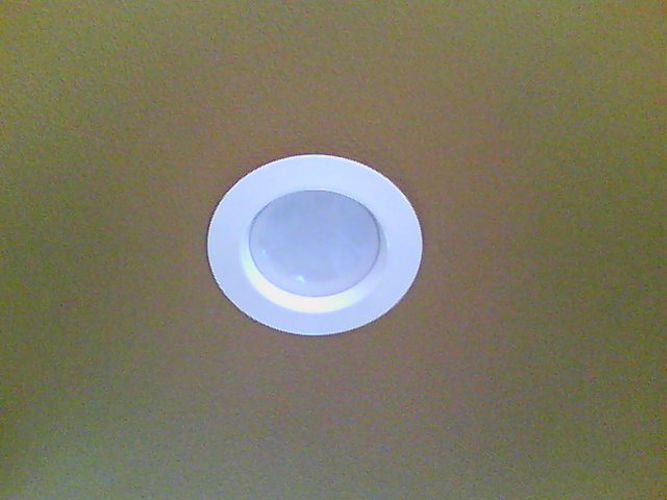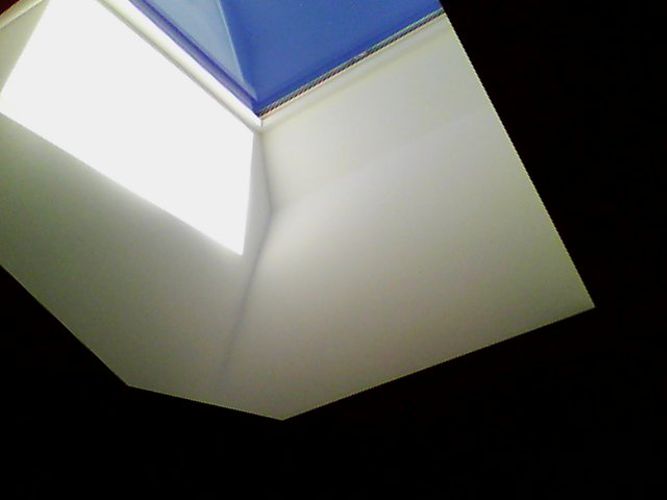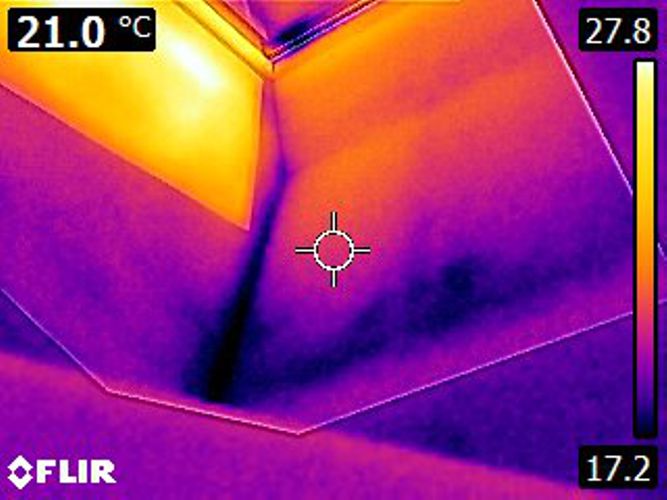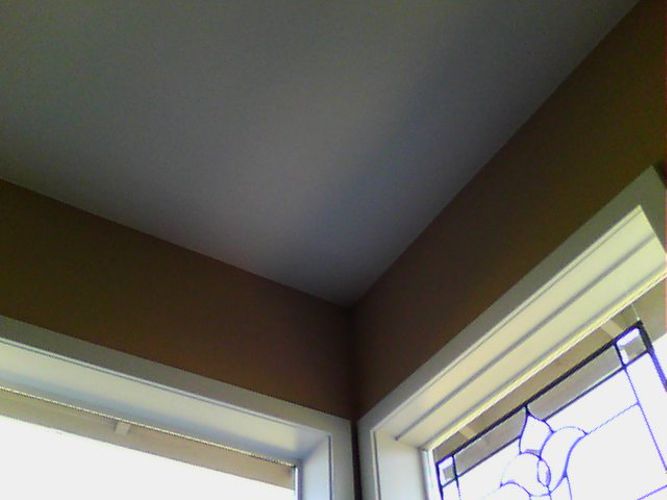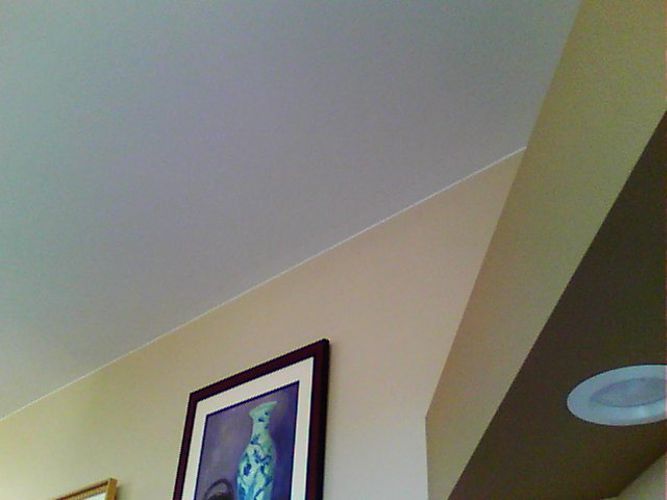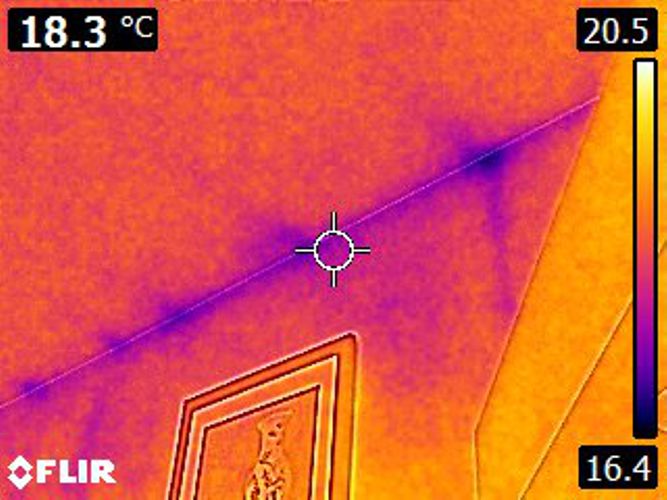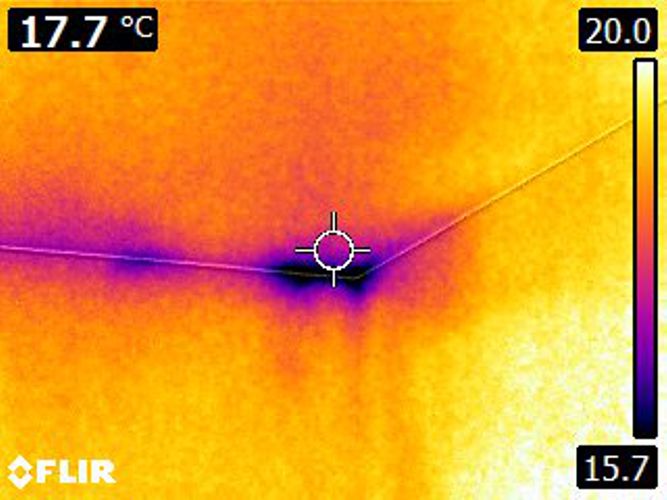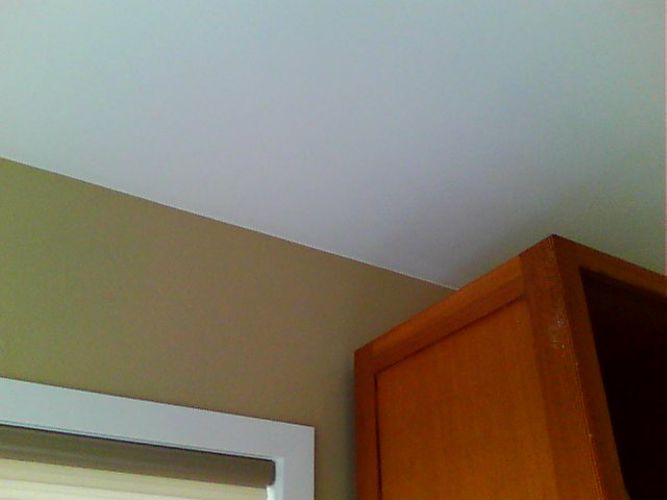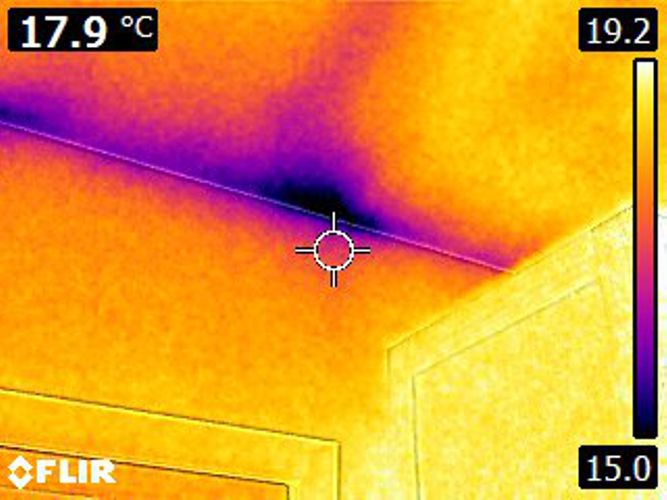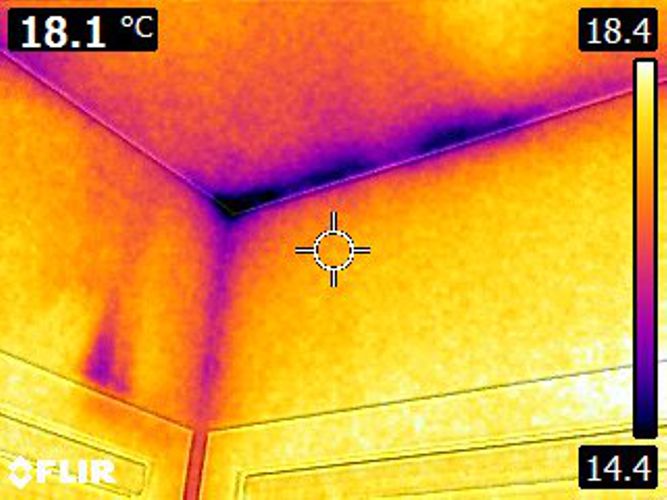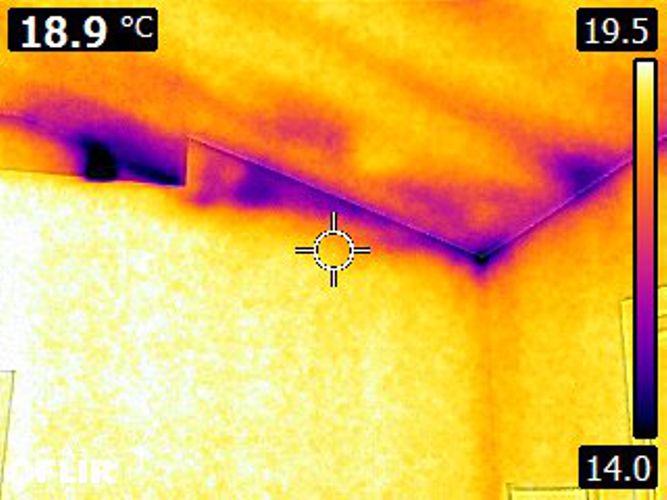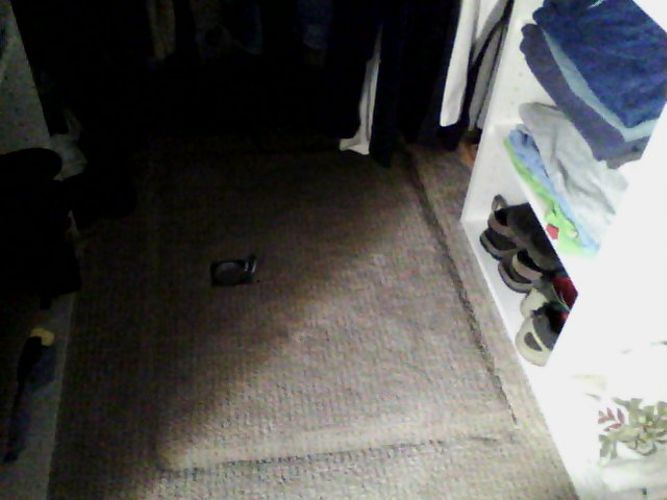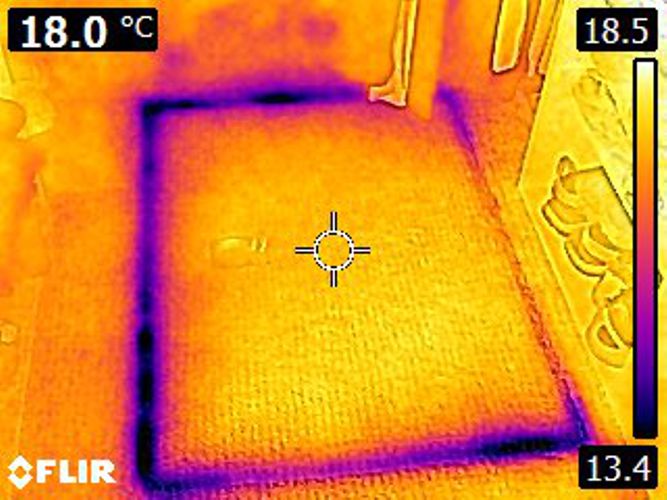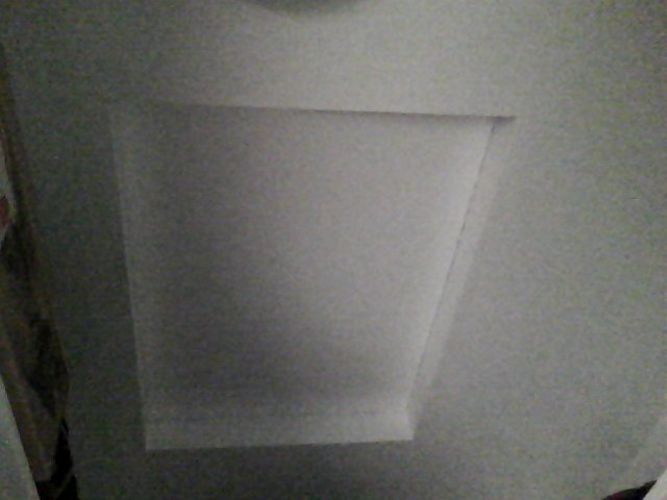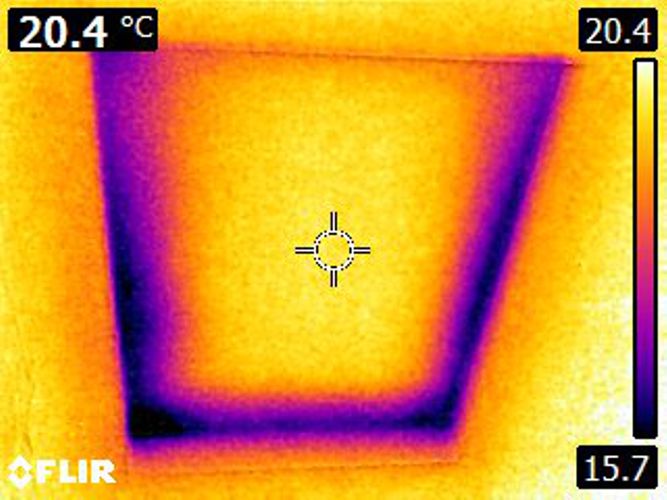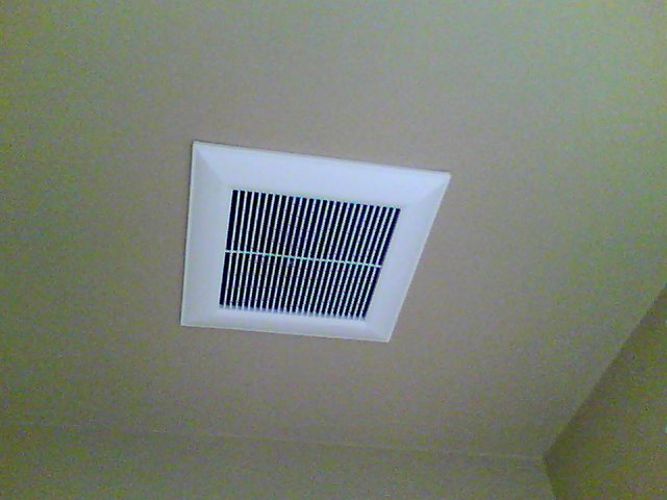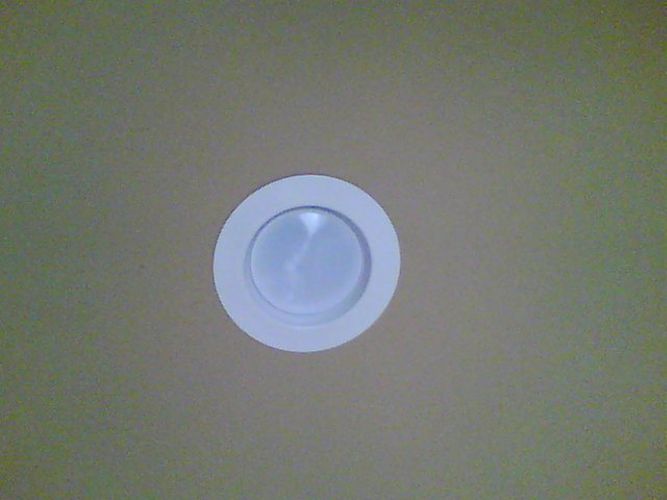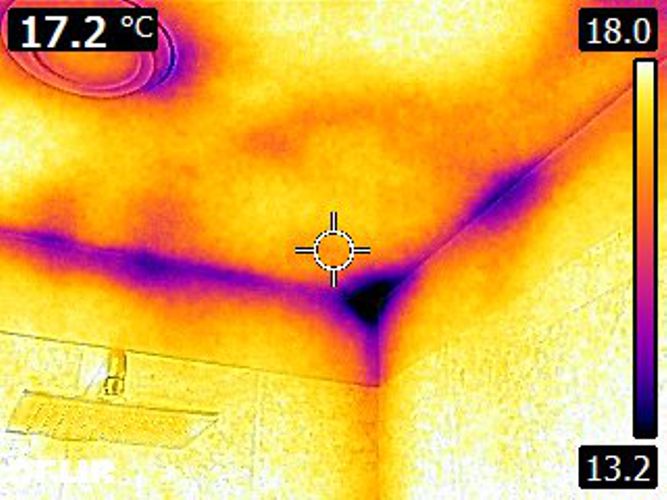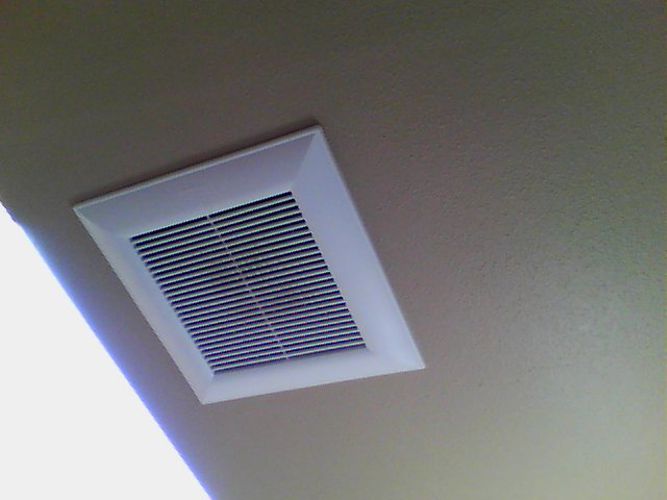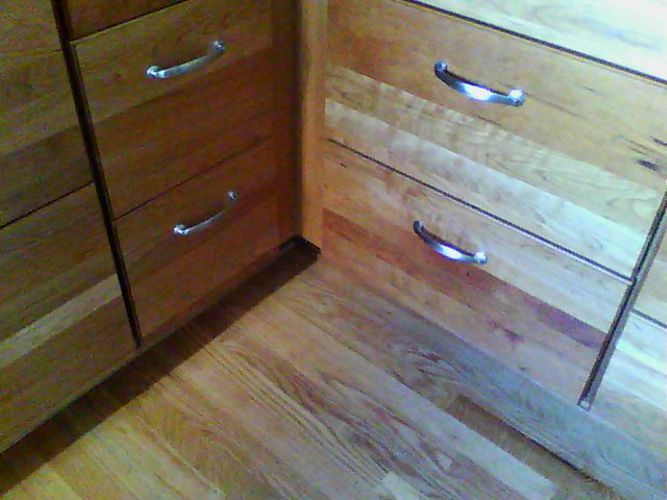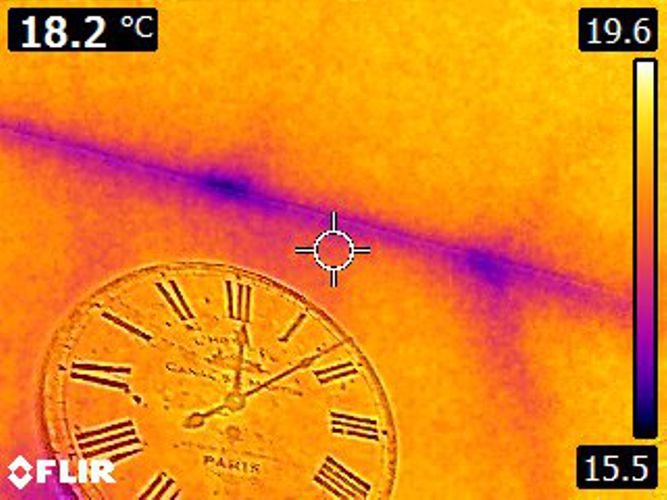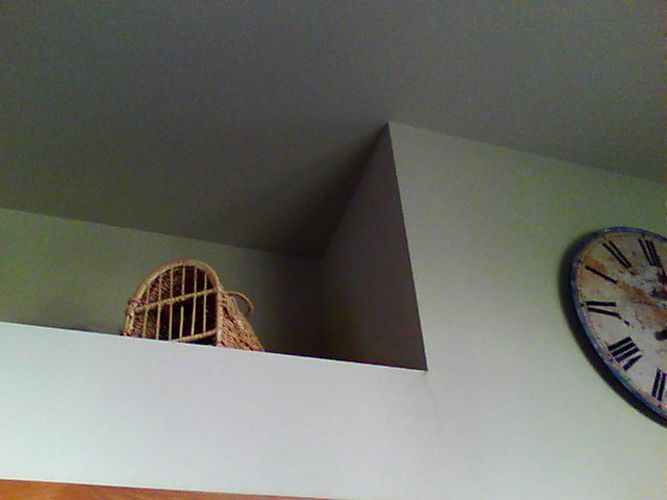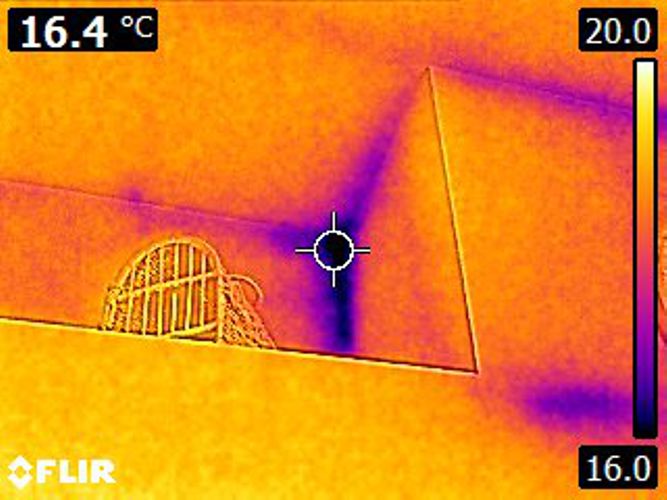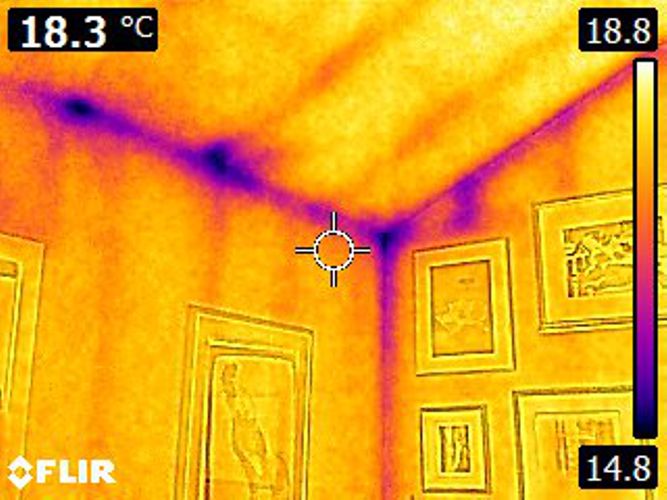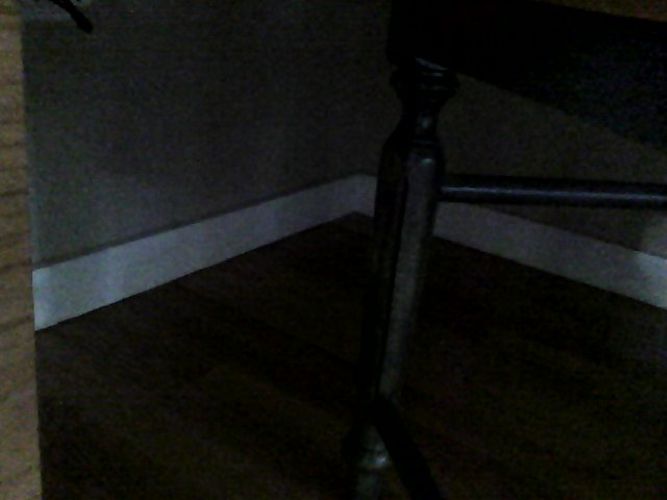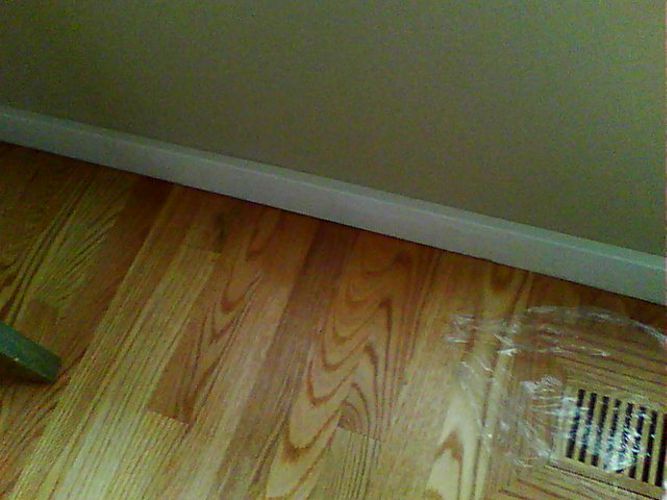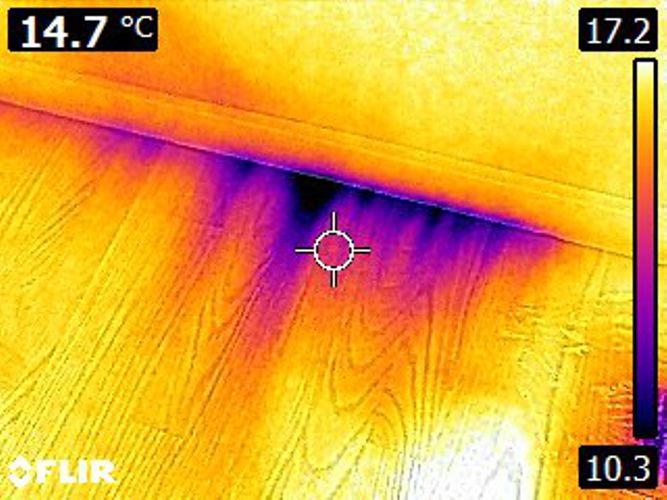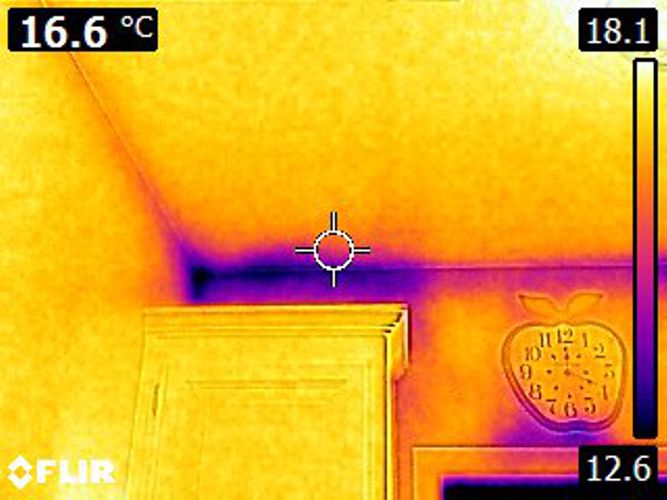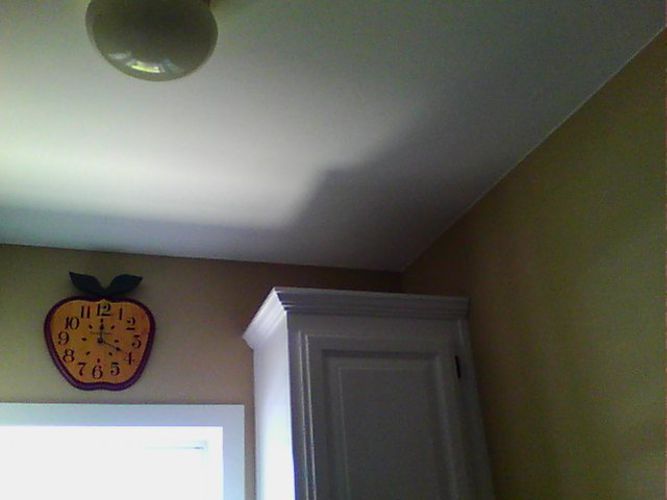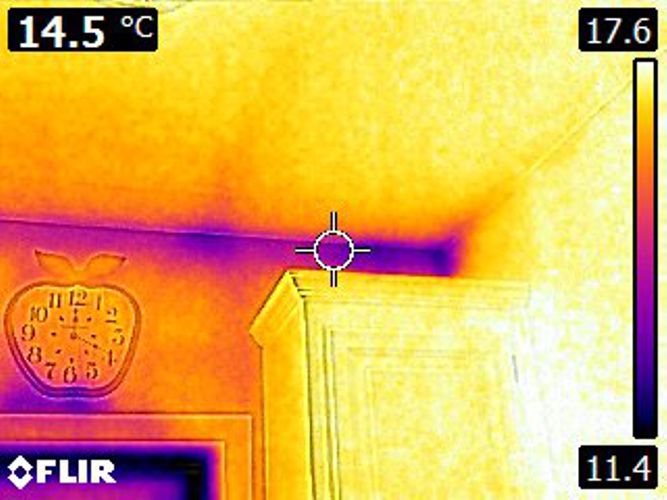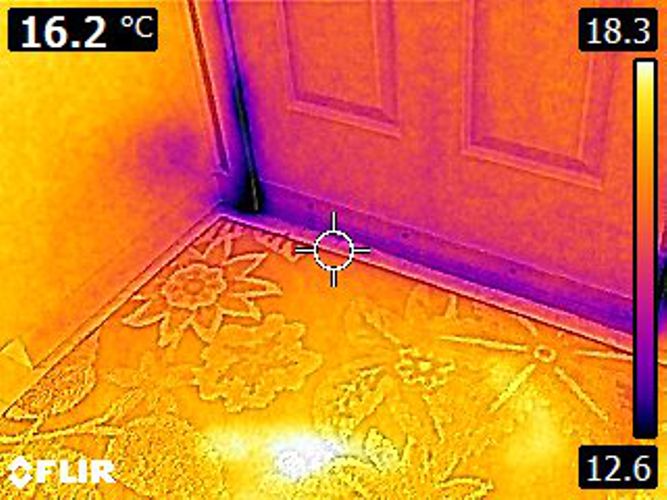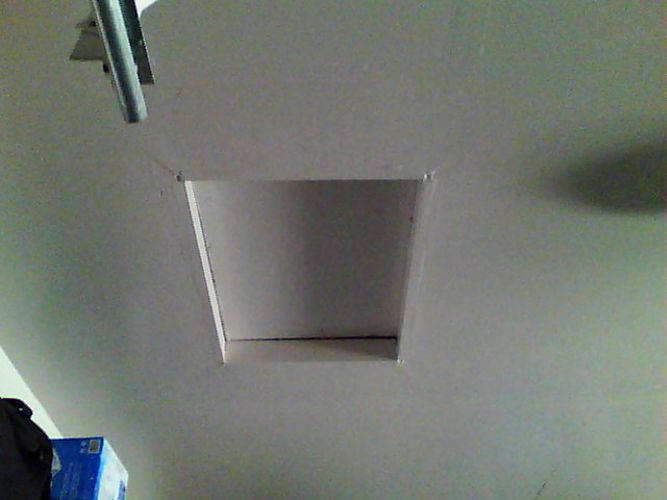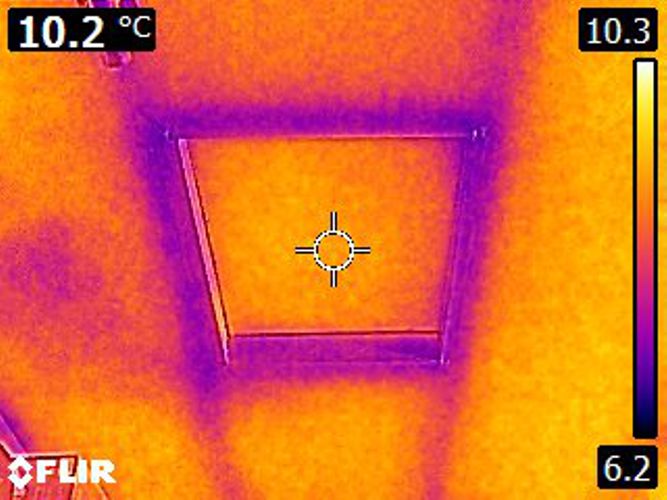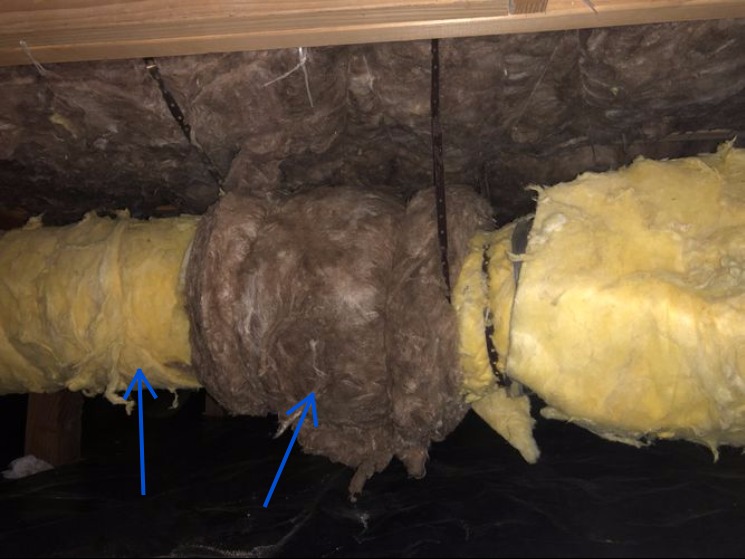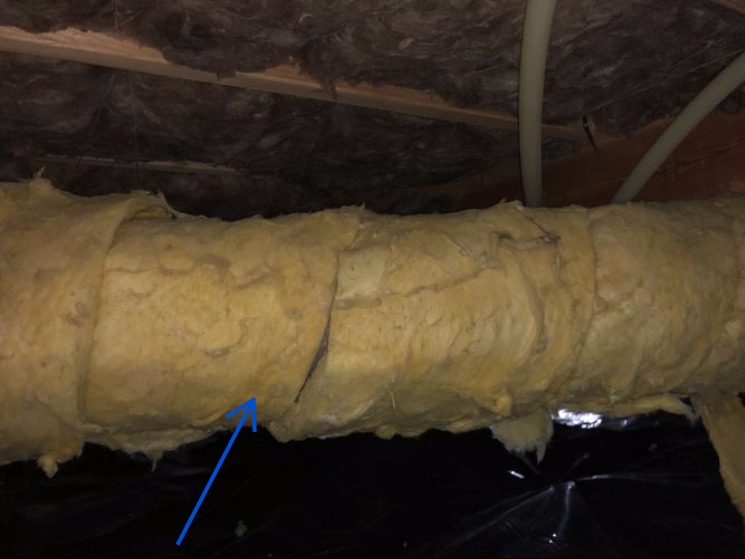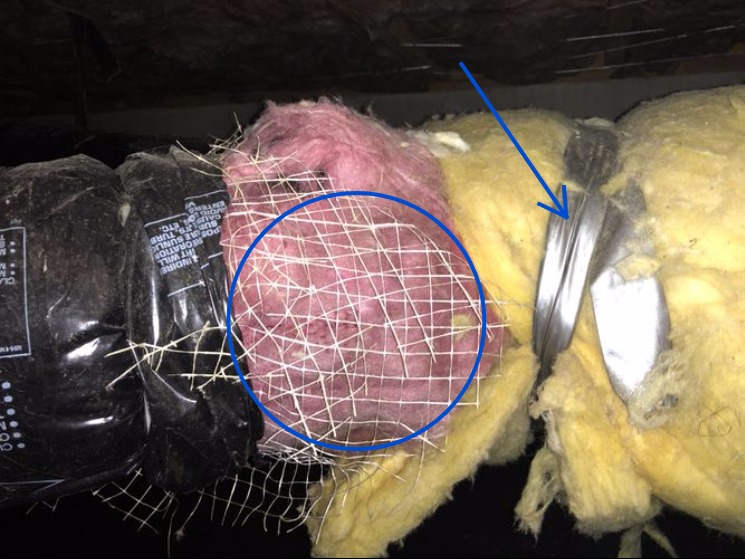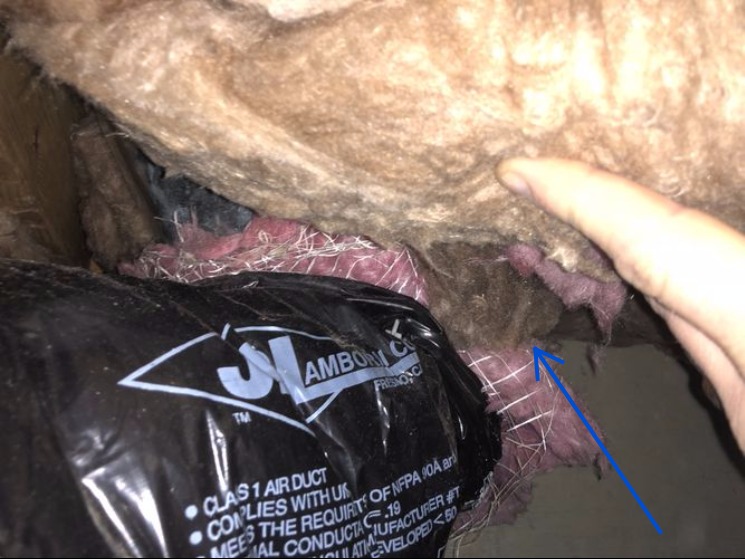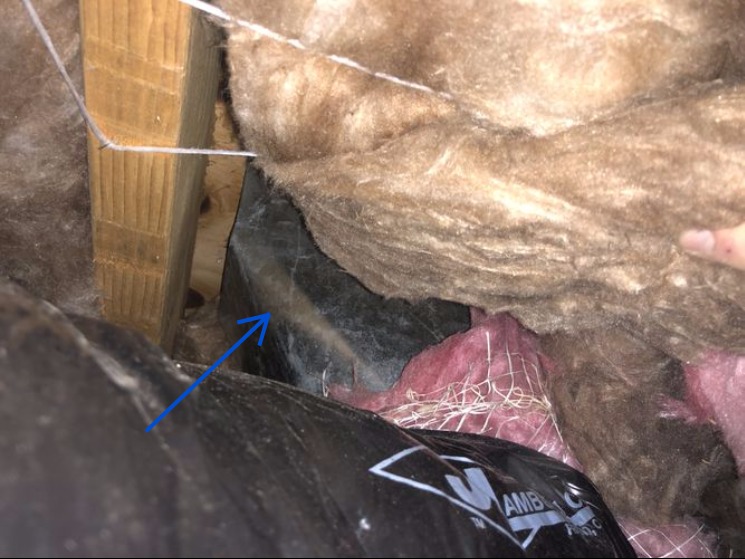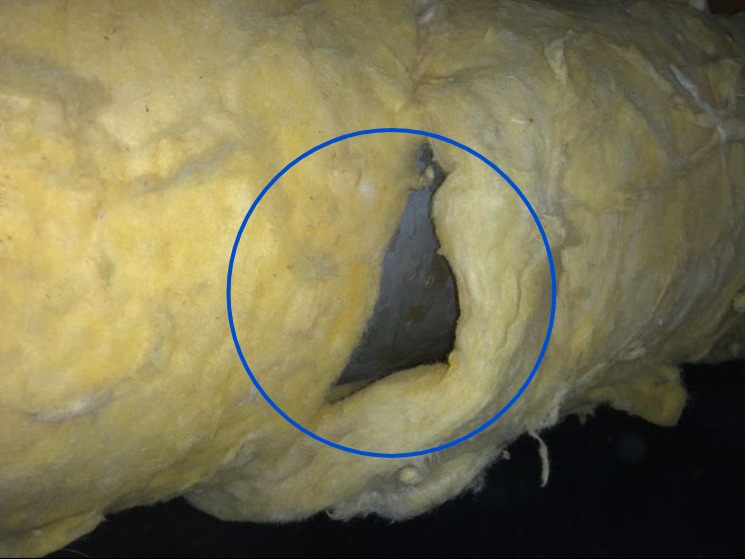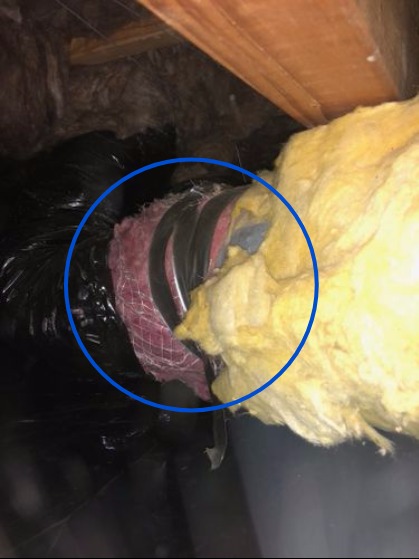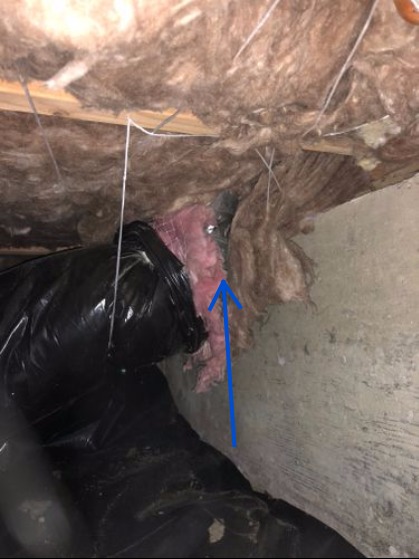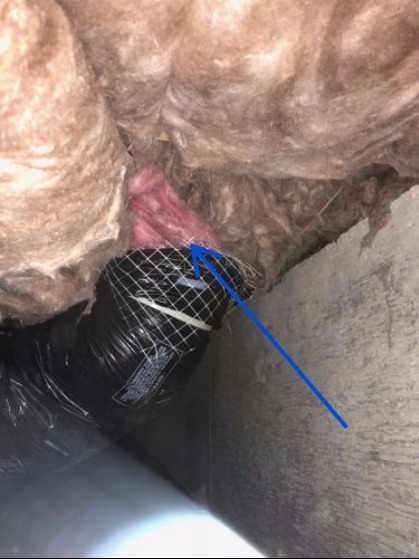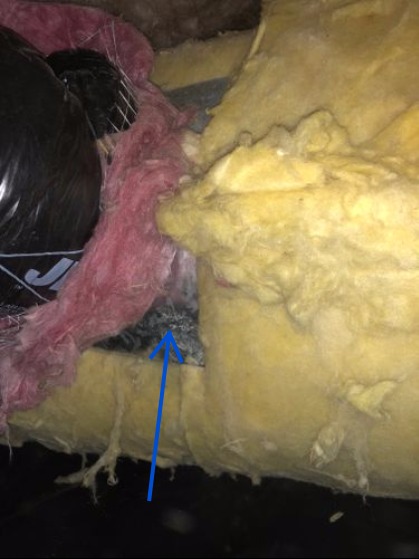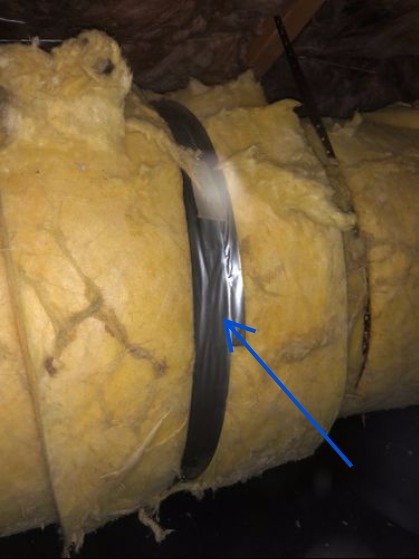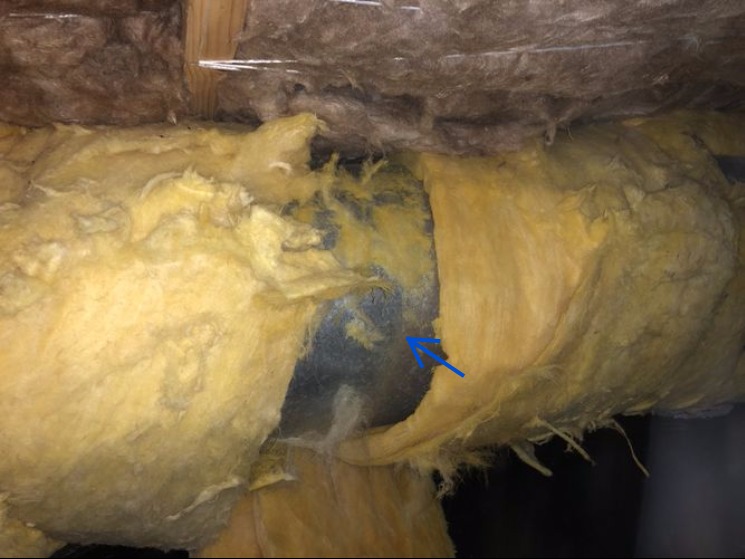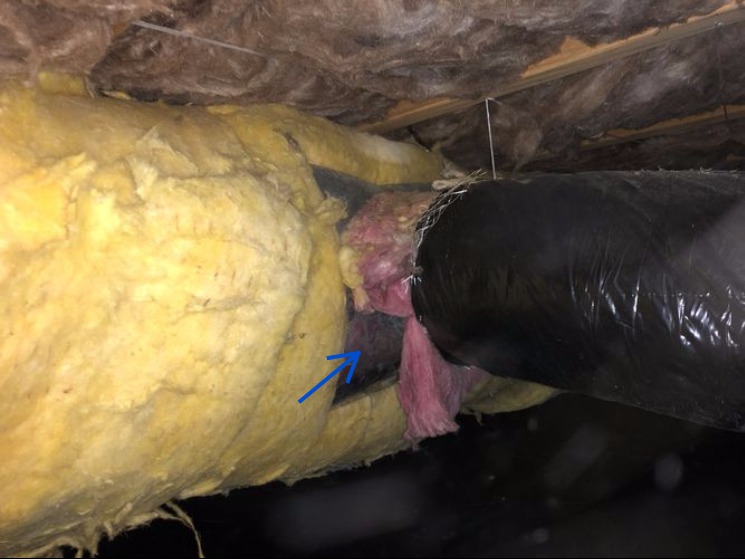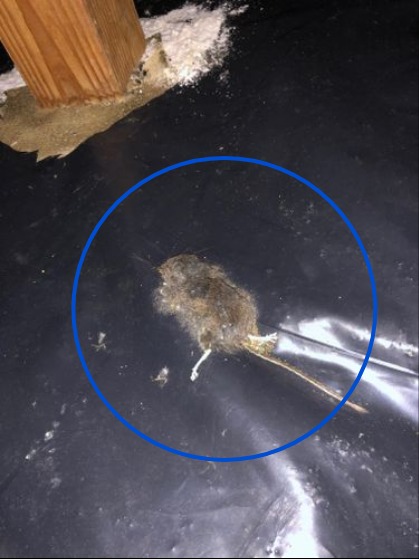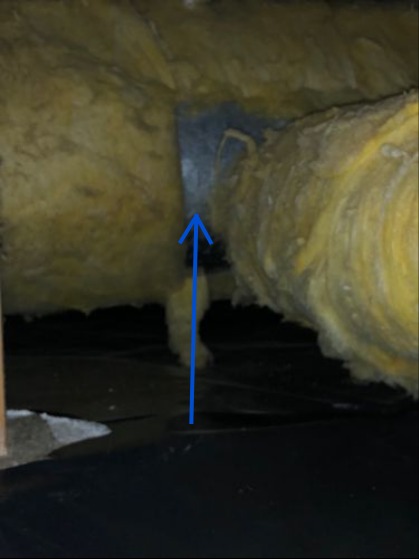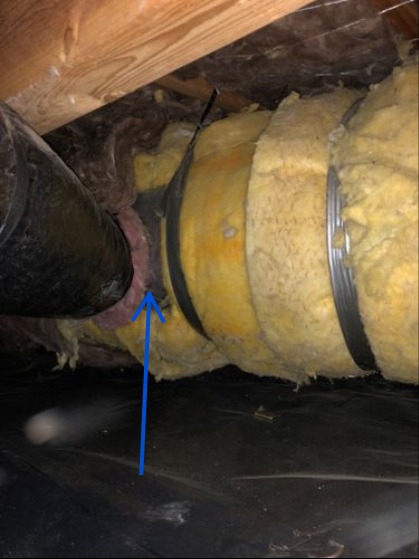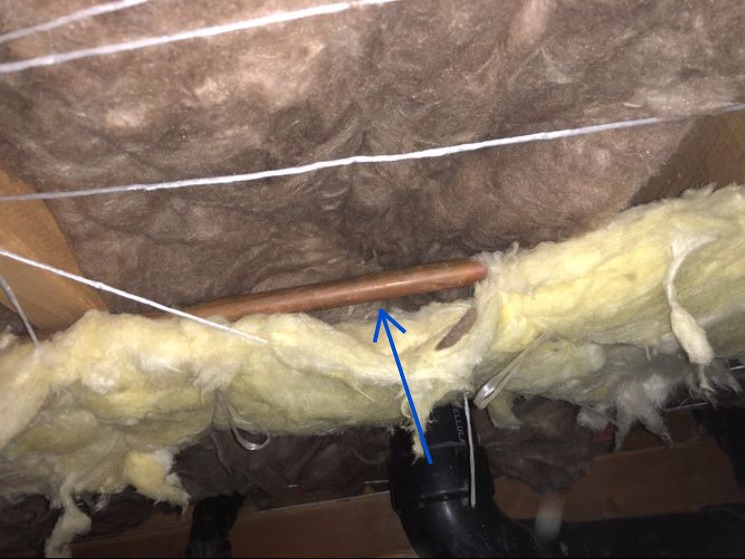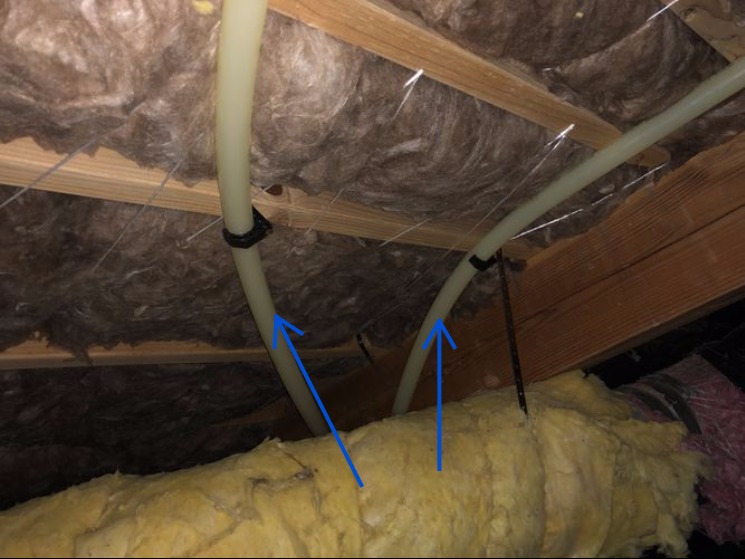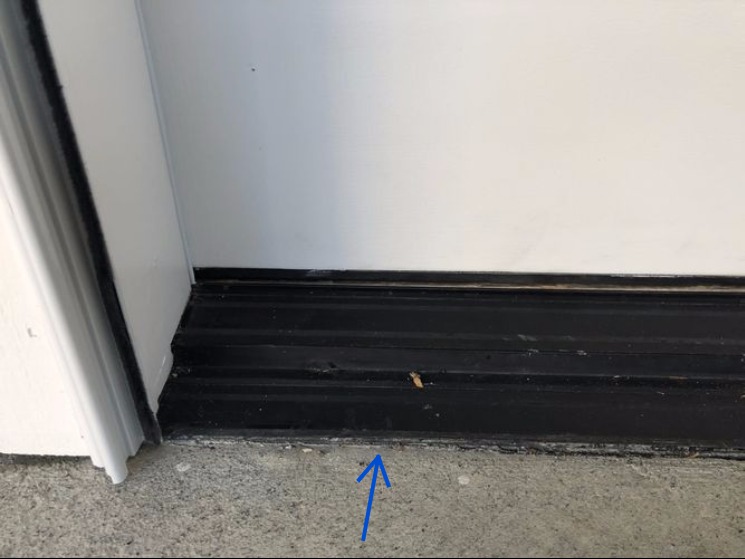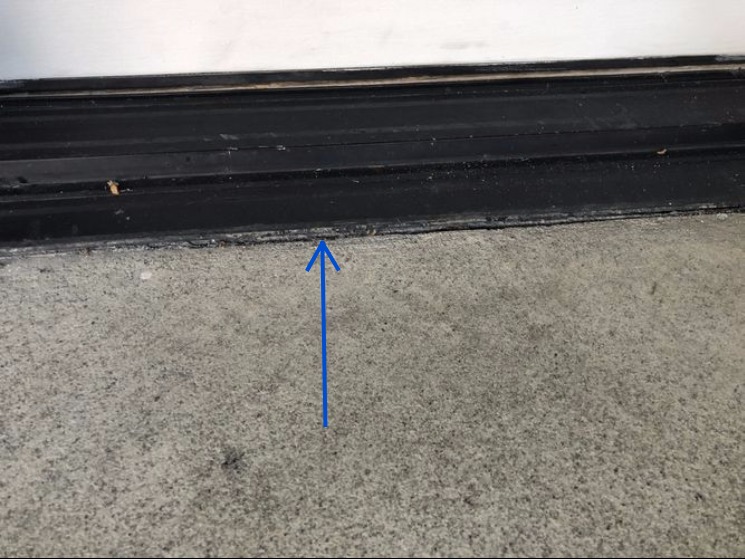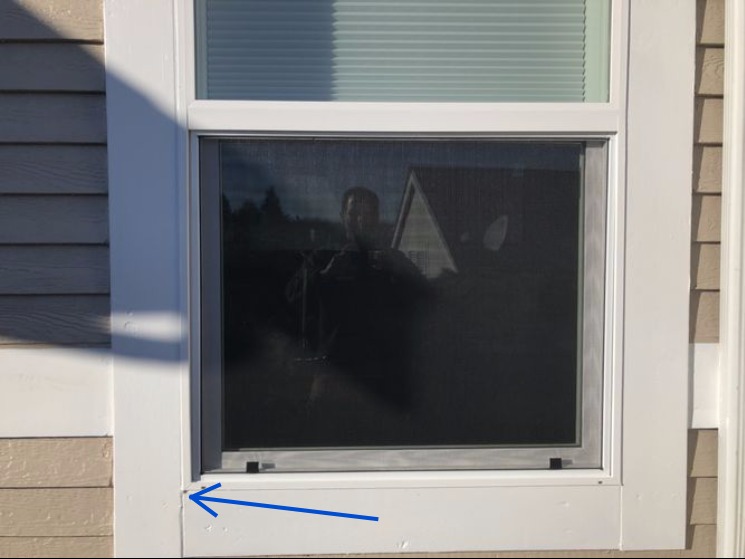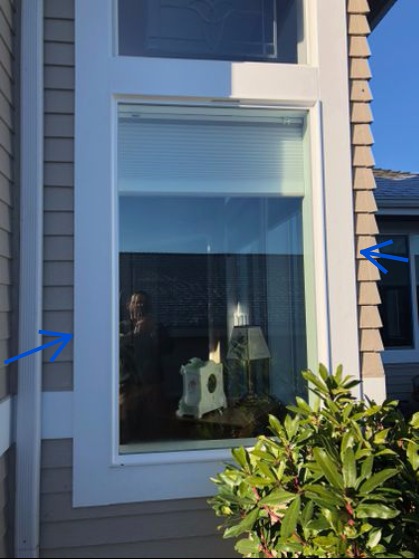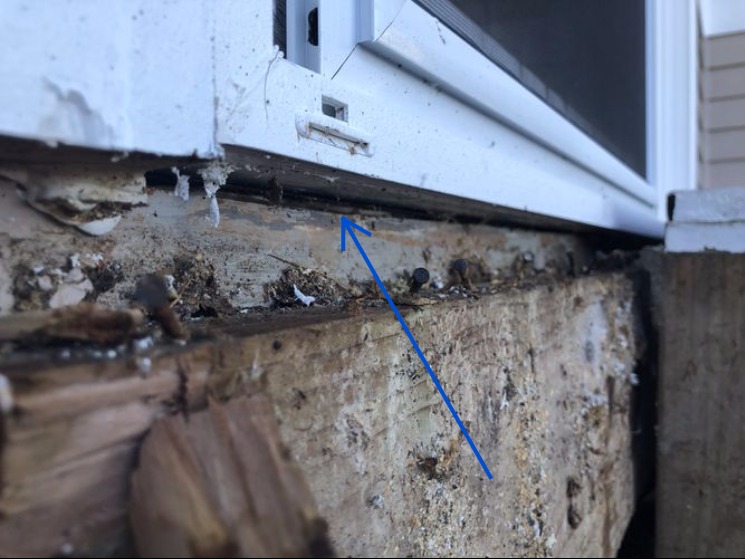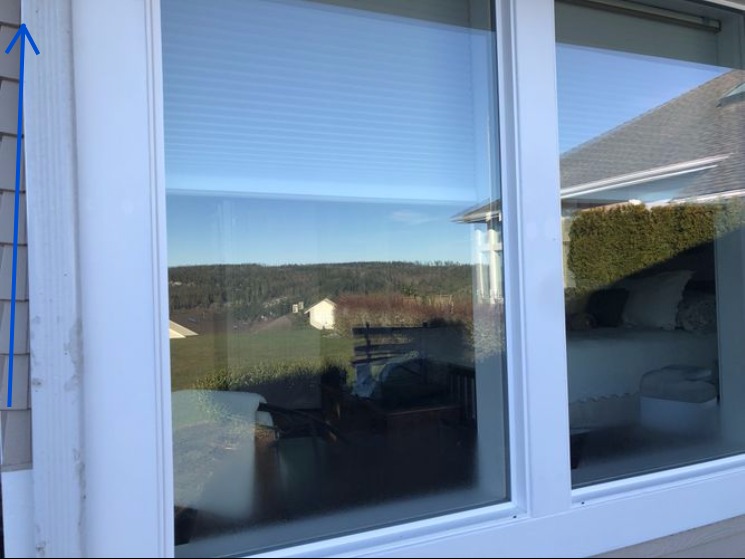Overview
This home has some work needed to become an energy efficient home. Some of the items observed including air leaks in the framing are difficult and not cost effective to treat at this point. Other items, such as duct sealing and insulation, upgrade to a high efficiency heat pump and generally improving the insulation levels in the attic are all attainable. I also recommend upgrading the washer and dryer appliances to modern energy star rated models. Rebates are available through Jefferson PUD at http://www.jeffpud.org/energy-efficiency/. Other savings include behaviors: keeping refrigerator doors shut, turning down heat in the evening and when out of town. Please see complete report and analysis.
Quick Look
Repairs
- (H-1) Heating:
(H-1) Repair: This building appears to be ready for a heat pump system - If you wish to upgrade the heating system in this building, I recommend an Energy Star heat pump as this will better pay for itself in saved heating costs.
- (P-1) Plumbing:
(P-1) Repair: The supply pipe insulation is incomplete in the crawl space. Be sure all supply lines in unheated spaces have been adequately insulated to protect from freezing conditions that could damage the pipes and to prevent heat loss.
- (P-3) Plumbing:
(P-3) Repair: The clothes washing machine is old and likely close to the end of its useful life. When replacing your clothes washer, I recommend an Energy Star brand. This will reduce water use and energy as you will use less hot water and less heat to dry the clothes. One energy saving tip is to wash clothes only in cold water. This will get your clothes plenty clean and reduce water heating costs.
- (P-4) Plumbing:
(P-4) Repair: The clothes dryer is old and is likely close to the end of its useful service life. It was operating at the time of inspection. This unit is not energy efficient. I recommend upgrading to an energy star unit.
- (K-1) Kitchen:
(K-1) Repair: I noted that the garage refrigerator was left open when I inspected the home. Some of the hardest habits in saving energy are behavioral. It appears the door was being held shut with a bungee cord that was leaving the door open. This wastes a ton of energy. Replace the fridge with an energy efficient unit with a functional door.
- (RA-1) Roof/Attic:
(RA-1) Repair: The skylight chamber in the attic has failing insulation - see where insulation is falling off the chamber. This needs to be repaired for proper building performance and to prevent condensation issues on this skylight chamber.
Efficiencies
- (BD-4) Blower Door:
(BD-4) Efficiency: Analysis:
Today
Turn down the temperature of your water heater to the warm setting (120° F). You'll not only save energy, you'll avoid scalding your hands.
Check to see if your water heater has an insulating blanket. An insulating blanket will pay for itself in one year or less!
Heating can account for almost half of the average family's winter energy bill. Make sure your furnace or heat pump receives professional maintenance each year. And look for the ENERGY STAR label when replacing your system.
Review additional strategies to reduce your water heating bills. Water heating can account for 14% to 25% of the energy consumed in your home.
Survey your incandescent lights for opportunities to replace them with compact fluorescents (CFLs) or light-emitting diodes (LEDs). CFLs can save three-quarters of the electricity used by incandescents. The best targets are 60 to 100 W bulbs used several hours a day. Measure the clearance in the fixtures to make sure they will accommodate compact fluorescents, which are slightly bigger than incandescents.
Turn off the lights in unoccupied rooms or consider installing timers, photo cells, or occupancy sensors to reduce the amount of time your lights are on.
Install a programmable thermostat that can be adjusted to temperatures according to your schedule.
During winter, open curtains on your south-facing windows during the day to allow sunlight to naturally heat your home, and close them at night to reduce the chill you may feel from cold windows.
Clean or replace filters in your furnace, air conditioner and heat pump.
ENERGY STAR–labeled products can cut your energy bills by up to 30%. Find retailers near you at www.energystar.gov when you're ready to replace your heating and cooling systems — as well as appliances, lighting, windows, office equipment, and home electronics.
This Week
Visit the hardware store. Buy a water-heater blanket, low-flow showerheads, faucet aerators, and compact fluorescents, as needed.
Rope-caulk leaky windows.
Assess your heating and cooling systems. Determine if replacements are justified, or whether you should retrofit them to make them work more efficiently to provide the same comfort (or better) for less energy.
This Month
Collect your utility bills. Separate electricity and fuel bills. Target the largest energy consumer or the largest bill for energy conservation measures.
Insulate your hot water pipes to prevent heat loss.
Insulate heating ducts in unheated areas, such as attics and crawlspaces. Keeping ducts in good repair can prevent heat loss of up to 60% at the registers.
Seal up the largest air leaks in your house — the ones that whistle on windy days, or feel drafty. The worst culprits are usually not windows and doors, but utility cut-throughs for pipes (plumbing penetrations), gaps around chimneys and recessed lights in insulated ceilings, and unfinished spaces behind cupboards and closets. Better yet, hire an energy auditor with a blower door to point out where the worst cracks are. All the little, invisible cracks and holes may add up to as much as an open window or door, without you ever knowing it!
This Year
Insulate. Have an insulation contractor blow cellulose into the walls. Bring your attic insulation level up to snuff.
Replace aging, inefficient appliances. Even if the appliance has a few useful years left, replacing it with a top-efficiency model is generally a good investment. Especially check the age and condition of your refrigerator.
Upgrade leaky windows. It may be time to replace them with energy-efficient models, or boost their efficiency with weatherstripping and storm windows. The typical home loses more than 25% of its heat through windows.
Reduce your air-conditioning costs by planting shade trees and shrubs around your house — especially on the west and south side.
- (H-2) Heating:
(H-2) Efficiency: The ductwork should not leak air. Leaking joints should be repaired with mechanical fasteners and then sealed with water-soluble mastic and embedded fiber mesh. Gray-cloth duct tape should never be used for this purpose. It degrades, cracks and loses its integrity and bond with age. If the joint is going to be opened up in the future for maintenance or other reasons, then aluminum foil tape might be installed. The ductwork should be wrapped with insulation that has a minimum R-value of 8, with a vapor-diffusion retarder facing on the outer (exterior) side. The insulation should not be compressed. The insulation should be overlapped and sealed with fiberglass tape where sections of the insulation meet. The insulation should not be torn or damaged. The vapor-diffusion retarder should not be cut, torn or damaged. The ductwork should not be compressed or damaged.
- (RA-2) Roof/Attic:
(RA-2) Efficiency: The attic insulation is done to older standards of R-30 and R-19. Modern standards recommended R-38 on floors and R-21 on walls. This could be improved for improved energy performance.
- (EG-1) Exterior/Garage:
(EG-1) Efficiency: The exterior door requires weather strip and an improved door sweep to make the door more weather proof and improve the energy efficiency of the home.
- (EG-2) Exterior/Garage:
(EG-2) Efficiency: I noted gaps under exterior door metal thresholds. Sealing the gap between the bottom of the metal threshold and the concrete helps to create a thermal barrier between the conditioned space of the home and the outside. Seal with silicone.
- (EG-3) Exterior/Garage:
(EG-3) Efficiency: Caulking where vinyl window frames meet exterior trim are the first step in air sealing the exterior envelope of the home. I noted that many of the exterior windows have areas with missing or deteriorated caulk. Small gaps in this caulk can accelerate heat loss in the winter and heat gain in the summer. Adding exterior caulk is the most cost effective means to air seal the exterior building envelope.
Completeds
- (BD-2) Blower Door:
(BD-2) Completed: See photos of blower door test below:
Analysis: This home was built to an older standard. After conclusion of the air leakage test with a blower door, I determined that it should be necessary to scan the building using an Infared camera to determine where air leakage was occurring. With a reading as high as the one obtained during the test, it is determined that the general level of air sealing in the framing system (wall, floor and ceiling construction) must be significantly below efficient standards.
Notes
- (SB-1) Structure and Basement:
(SB-1) Note: An exterior wall of a building should be properly sealed, protected from moisture, and insulated properly to increase comfort, reduce noise, and save on energy costs. An exterior wall is complex; one of the most complex systems in a building is the building envelope. An effective wall should have the following characteristics:
- airtight: all air leaks should be sealed in the wall during construction and before the insulation is installed in the wall;
- moisture-controlled: an exterior rain drainage system, an air barrier, and a vapor diffusion retarder should be installed on the wall on the correct side of the wall; and
- complete insulation coverage: the wall framing should provide enough room for complete, maximum insulation coverage and reduce thermal bridging, with no open gaps or compressed insulation, and continuous insulated sheathing.
- (SB-2) Structure and Basement:
(SB-2) Note: How Insulation Works
Insulation provides resistance to heat flow. The more heat flow resistance the insulation provides, the lower the heating and cooling costs.
Heat flows naturally from a warm to a cool — from a warmer space to a cooler space. In the cold winter, this heat flow moves directly from all heated living spaces to adjacent unheated spaces, such as attics, garages, basements, under-floor crawlspaces, and even to the outdoors. Heat flow can also move indirectly through interior ceilings, walls and floors — wherever there is a difference in temperature. During the cooling season, heat flows from the exterior to the interior of a building.
To keep the occupants of the building comfortable, the heat lost in the winter must be replaced by the heating system, and the heat gained in the summer must be removed by the cooling system. A properly insulated home will decrease this heat flow by providing an effective resistance to the flow of heat.
Batts, blankets, loose-fill and low-density foams all work by limiting air movement. The still air inside the insulation is an effective insulator because it eliminates convection. Still air also has low conduction, so heat doesn’t flow very well via conduction through insulation. Some foams are filled with special gases that provide additional resistance to heat flow.
Reflective insulation limits heat that travels in the form of radiation. Some reflective insulation also reduces air movement, but not as much as other insulation types.
Don’t confuse insulation’s ability to limit air movement with “air sealing.” Insulation reduces air movement only within the space it occupies. It cannot limit air movement through other pathways nearby. For example, the insulation in the wall cavity does not affect the air leakage that may take place around a window frame. Adding insulation will not likely have the same effect as air sealing.
Insulation's resistance to heat flow is measured or rated in terms of its thermal resistance, better known by inspectors as the “R-value.” Let’s learn about R-value.
- (SB-3) Structure and Basement:
(SB-3) Note: Thermal Bridging
Insulation in between studs in a wall does not restrict the heat flow through those studs. This heat flow is called “thermal bridging.” The overall R-value of that wall may be different from the R-value of the insulation itself.
It is recommended that the insulation installed in an attic covers the tops of the attic floor joists. And it is also recommended that insulation sheathing be installed on stud walls. Wood studs can transfer energy through the wall assembly. Metal studs can transfer energy much better than wood studs can. As a result, the metal wall’s overall R-value can be as low as half of the insulation’s R-value.
- (BD-1) Blower Door:
(BD-1) Note: A blower door is a diagnostic tool designed to measure the airtightness of a building and to help locate air leakage sites. The blower door has a variable-speed fan and meters to measure airflow and pressure. Blower doors are used for a variety of purposes, including:
- documenting the construction airtightness of buildings;
- estimating natural infiltration rates in houses;
- measuring and documenting the effectiveness of air-sealing activities; and
- measuring duct leakage in forced-air distribution systems.
A building can lose energy by the transfer of heat via conduction, radiation and convection. Convection loss deals with air movement. Almost all buildings have some air movement through the building envelope. Where there is a driving force or a pressure difference across the envelope, air moves. If there is air moving into a dwelling through an open gap, then there is also air moving out of the dwelling through another open gap located somewhere else.
Pressure can cause air to move. Pressure differences can be caused by wind, exhaust fans, or the venting of combustion appliances.
Temperature can cause air to move. The stack effect is a powerful force that can cause convective losses in many homes, particularly during the cold winter months.
Stack Effect
Stack effect, in relation to residential energy audits, is the movement of air into and out of a house. It is driven by buoyancy. Buoyancy occurs due to a difference in indoor-to-outdoor air density resulting from temperature and moisture differences. The result is either a positive or negative buoyancy force. The greater the thermal difference and the height of the structure, the greater the buoyancy force.
Since houses are not completely sealed, the stack effect can cause air to infiltrate. During the heating season, the warmer indoor air rises up through the structure and exits through open windows, vents and air leakage points. The rising warm air drops the pressure in the lower part of the building, forcing cold air to infiltrate through open doors, windows and other openings and air leakage points.
When there is only a temperature difference causing the air to move and leak, there exists what is called the neutral zone of a building (or the neutral pressure level or NPL). It is where the interior and exterior air pressures are equal. At all other areas above and below, the pressure differences between the interior and exterior depends on the distance from the neutral zone and the difference between the air densities of the inside and outside air. At the neutral zone, there is neither infiltration nor exfiltration of air in significant amounts. The neutral zone is typically located in the middle of a building where the pressure differences are at a minimum.
It is important to understand the significance of sealing the air leakage points at the top and bottom portions of a building, rather than anywhere else.
Usually, the natural air movement in a house depends on a combined force of wind and stack effects. Pressures continually change as the temperatures and wind forces change.
The wind and stack pressures in a house depend on the house’s height, resistance to air flow through the house interior, the air leakage openings, the local terrain, and the immediate shielding of the house’s structure.
How a Blower Door Works
The blower door is a tool used to exaggerate pressure differences on a building. The blower door is made up of a powerful fan that is temporarily installed inside an exterior doorway opening. The fan blows air into or out of the building to create a slight pressure difference between the inside and outside. This pressure difference forces air through holes and penetrations in the exterior envelope.
By simultaneously measuring the air flow through the fan and its effect on the air pressure in the building, the blower door system measures the airtightness of the entire building envelope.
The tighter the building (e.g. the fewer the holes), the less air you need from the blower-door fan to create a change in building pressure.
Blower Door Test
A typical blower door test will include a series of fan-flow measurements at a variety of building pressures ranging from 60 pascals to 15 pascals. One pascal (Pa) equals approximately 0.004 inches of water column.
During a blower door test, the fan is on at a high speed. The door needs to create significant pressure differences in order to create results that are measurable. Tests are done at relatively high pressures to also mitigate the effects of wind and stack-effect pressures on the test results.
Oftentimes, a simple “one-point” test is conducted where the building is tested at a single pressure (typically, 50 pascals). This is done when a quick assessment of airtightness is needed.
How Long Does it Take?
It takes about 20 minutes to set up a blower door, conduct a test, and document the airtightness of a building.
The blower door can be used to estimate the amount of leakage between the conditioned space of a house and attached structural components, like a garage.
It can also be used to estimate the amount of leakage in forced-air duct systems.
The blower door forces air through holes and gaps. And these problem spots are easier to find using chemical smoke, an infrared camera, or by simply using the sensitive backside of your hand.
The blower door can also help investigate backdrafting and help determine the need for mechanical ventilation.
Wind and Temperature Can Affect a Test
Wind blowing on the house can significantly affect the blower door test. Wind has the largest impact on blower door tests. If the wind is blowing at 20 mph against the house, it can create an indoor-outdoor pressure difference as much as 50 pascals. A measurement of a house using a blower door during a time of high wind pressures can affect the test, the flow rate of the blower fan itself can be changed, and the measurement accuracy of the fan flow will be affected.
- (BD-3) Blower Door:
(BD-3) Note: Each Image was taken in the home to look for large air gaps in the building or areas where air sealing is needed. The format of the photos will be: (1) infa-red image followed by a normal picture of the area being documented.
- (EG-4) Exterior/Garage:
(EG-4) Note: The chimney was not finished at the time of inspection and was sealed to conduct the blower door test. The chimney cladding should be airtight when completed. Remember to close the damper when the chimney is not in use.
Structure and Basement
Foundation
% of Foundation Not Visible 30%
Evidence of Seismic Protection Present
Building Configuration Crawl space
Foundation Description Poured concrete
Floor, Wall and Ceiling Framing
Wall Insulation Not visible, R-19 (estimated)
Wall Sheathing OSB
Floor Framing TGI Joists
Sub-Floor Material OSB
Ceiling Framing Bottom cord of truss
(SB-1) Note: An exterior wall of a building should be properly sealed, protected from moisture, and insulated properly to increase comfort, reduce noise, and save on energy costs. An exterior wall is complex; one of the most complex systems in a building is the building envelope. An effective wall should have the following characteristics:
- airtight: all air leaks should be sealed in the wall during construction and before the insulation is installed in the wall;
- moisture-controlled: an exterior rain drainage system, an air barrier, and a vapor diffusion retarder should be installed on the wall on the correct side of the wall; and
- complete insulation coverage: the wall framing should provide enough room for complete, maximum insulation coverage and reduce thermal bridging, with no open gaps or compressed insulation, and continuous insulated sheathing.
(SB-2) Note: How Insulation Works
Insulation provides resistance to heat flow. The more heat flow resistance the insulation provides, the lower the heating and cooling costs.
Heat flows naturally from a warm to a cool — from a warmer space to a cooler space. In the cold winter, this heat flow moves directly from all heated living spaces to adjacent unheated spaces, such as attics, garages, basements, under-floor crawlspaces, and even to the outdoors. Heat flow can also move indirectly through interior ceilings, walls and floors — wherever there is a difference in temperature. During the cooling season, heat flows from the exterior to the interior of a building.
To keep the occupants of the building comfortable, the heat lost in the winter must be replaced by the heating system, and the heat gained in the summer must be removed by the cooling system. A properly insulated home will decrease this heat flow by providing an effective resistance to the flow of heat.
Batts, blankets, loose-fill and low-density foams all work by limiting air movement. The still air inside the insulation is an effective insulator because it eliminates convection. Still air also has low conduction, so heat doesn’t flow very well via conduction through insulation. Some foams are filled with special gases that provide additional resistance to heat flow.
Reflective insulation limits heat that travels in the form of radiation. Some reflective insulation also reduces air movement, but not as much as other insulation types.
Don’t confuse insulation’s ability to limit air movement with “air sealing.” Insulation reduces air movement only within the space it occupies. It cannot limit air movement through other pathways nearby. For example, the insulation in the wall cavity does not affect the air leakage that may take place around a window frame. Adding insulation will not likely have the same effect as air sealing.
Insulation's resistance to heat flow is measured or rated in terms of its thermal resistance, better known by inspectors as the “R-value.” Let’s learn about R-value.
(SB-3) Note: Thermal Bridging
Insulation in between studs in a wall does not restrict the heat flow through those studs. This heat flow is called “thermal bridging.” The overall R-value of that wall may be different from the R-value of the insulation itself.
It is recommended that the insulation installed in an attic covers the tops of the attic floor joists. And it is also recommended that insulation sheathing be installed on stud walls. Wood studs can transfer energy through the wall assembly. Metal studs can transfer energy much better than wood studs can. As a result, the metal wall’s overall R-value can be as low as half of the insulation’s R-value.
Crawl Space
Crawl Space Access
Method of Inspection Crawled
Vapor Barrier
Vapor Barrier Material Plastic
Crawl Space Ventilation
Ventilation Method Exterior wall vents
Posts and Footings
Standard
Insulation
Insulation Type Mineral Wool
Approximate R-Value R-30
Moisture Conditions
Present
Rodents
Present
Blower Door
Education
What is it?
(BD-1) Note: A blower door is a diagnostic tool designed to measure the airtightness of a building and to help locate air leakage sites. The blower door has a variable-speed fan and meters to measure airflow and pressure. Blower doors are used for a variety of purposes, including:
- documenting the construction airtightness of buildings;
- estimating natural infiltration rates in houses;
- measuring and documenting the effectiveness of air-sealing activities; and
- measuring duct leakage in forced-air distribution systems.
A building can lose energy by the transfer of heat via conduction, radiation and convection. Convection loss deals with air movement. Almost all buildings have some air movement through the building envelope. Where there is a driving force or a pressure difference across the envelope, air moves. If there is air moving into a dwelling through an open gap, then there is also air moving out of the dwelling through another open gap located somewhere else.
Pressure can cause air to move. Pressure differences can be caused by wind, exhaust fans, or the venting of combustion appliances.
Temperature can cause air to move. The stack effect is a powerful force that can cause convective losses in many homes, particularly during the cold winter months.
Stack Effect
Stack effect, in relation to residential energy audits, is the movement of air into and out of a house. It is driven by buoyancy. Buoyancy occurs due to a difference in indoor-to-outdoor air density resulting from temperature and moisture differences. The result is either a positive or negative buoyancy force. The greater the thermal difference and the height of the structure, the greater the buoyancy force.
Since houses are not completely sealed, the stack effect can cause air to infiltrate. During the heating season, the warmer indoor air rises up through the structure and exits through open windows, vents and air leakage points. The rising warm air drops the pressure in the lower part of the building, forcing cold air to infiltrate through open doors, windows and other openings and air leakage points.
When there is only a temperature difference causing the air to move and leak, there exists what is called the neutral zone of a building (or the neutral pressure level or NPL). It is where the interior and exterior air pressures are equal. At all other areas above and below, the pressure differences between the interior and exterior depends on the distance from the neutral zone and the difference between the air densities of the inside and outside air. At the neutral zone, there is neither infiltration nor exfiltration of air in significant amounts. The neutral zone is typically located in the middle of a building where the pressure differences are at a minimum.
It is important to understand the significance of sealing the air leakage points at the top and bottom portions of a building, rather than anywhere else.
Usually, the natural air movement in a house depends on a combined force of wind and stack effects. Pressures continually change as the temperatures and wind forces change.
The wind and stack pressures in a house depend on the house’s height, resistance to air flow through the house interior, the air leakage openings, the local terrain, and the immediate shielding of the house’s structure.
How a Blower Door Works
The blower door is a tool used to exaggerate pressure differences on a building. The blower door is made up of a powerful fan that is temporarily installed inside an exterior doorway opening. The fan blows air into or out of the building to create a slight pressure difference between the inside and outside. This pressure difference forces air through holes and penetrations in the exterior envelope.
By simultaneously measuring the air flow through the fan and its effect on the air pressure in the building, the blower door system measures the airtightness of the entire building envelope.
The tighter the building (e.g. the fewer the holes), the less air you need from the blower-door fan to create a change in building pressure.
Blower Door Test
A typical blower door test will include a series of fan-flow measurements at a variety of building pressures ranging from 60 pascals to 15 pascals. One pascal (Pa) equals approximately 0.004 inches of water column.
During a blower door test, the fan is on at a high speed. The door needs to create significant pressure differences in order to create results that are measurable. Tests are done at relatively high pressures to also mitigate the effects of wind and stack-effect pressures on the test results.
Oftentimes, a simple “one-point” test is conducted where the building is tested at a single pressure (typically, 50 pascals). This is done when a quick assessment of airtightness is needed.
How Long Does it Take?
It takes about 20 minutes to set up a blower door, conduct a test, and document the airtightness of a building.
The blower door can be used to estimate the amount of leakage between the conditioned space of a house and attached structural components, like a garage.
It can also be used to estimate the amount of leakage in forced-air duct systems.
The blower door forces air through holes and gaps. And these problem spots are easier to find using chemical smoke, an infrared camera, or by simply using the sensitive backside of your hand.
The blower door can also help investigate backdrafting and help determine the need for mechanical ventilation.
Wind and Temperature Can Affect a Test
Wind blowing on the house can significantly affect the blower door test. Wind has the largest impact on blower door tests. If the wind is blowing at 20 mph against the house, it can create an indoor-outdoor pressure difference as much as 50 pascals. A measurement of a house using a blower door during a time of high wind pressures can affect the test, the flow rate of the blower fan itself can be changed, and the measurement accuracy of the fan flow will be affected.
Blower Door Test
Test Completed
(BD-2) Completed: See photos of blower door test below:
Analysis: This home was built to an older standard. After conclusion of the air leakage test with a blower door, I determined that it should be necessary to scan the building using an Infared camera to determine where air leakage was occurring. With a reading as high as the one obtained during the test, it is determined that the general level of air sealing in the framing system (wall, floor and ceiling construction) must be significantly below efficient standards.
Infa Red Scan
Performed
(BD-3) Note: Each Image was taken in the home to look for large air gaps in the building or areas where air sealing is needed. The format of the photos will be: (1) infa-red image followed by a normal picture of the area being documented.
(BD-4) Efficiency: Analysis:
Today
Turn down the temperature of your water heater to the warm setting (120° F). You'll not only save energy, you'll avoid scalding your hands.
Check to see if your water heater has an insulating blanket. An insulating blanket will pay for itself in one year or less!
Heating can account for almost half of the average family's winter energy bill. Make sure your furnace or heat pump receives professional maintenance each year. And look for the ENERGY STAR label when replacing your system.
Review additional strategies to reduce your water heating bills. Water heating can account for 14% to 25% of the energy consumed in your home.
Survey your incandescent lights for opportunities to replace them with compact fluorescents (CFLs) or light-emitting diodes (LEDs). CFLs can save three-quarters of the electricity used by incandescents. The best targets are 60 to 100 W bulbs used several hours a day. Measure the clearance in the fixtures to make sure they will accommodate compact fluorescents, which are slightly bigger than incandescents.
Turn off the lights in unoccupied rooms or consider installing timers, photo cells, or occupancy sensors to reduce the amount of time your lights are on.
Install a programmable thermostat that can be adjusted to temperatures according to your schedule.
During winter, open curtains on your south-facing windows during the day to allow sunlight to naturally heat your home, and close them at night to reduce the chill you may feel from cold windows.
Clean or replace filters in your furnace, air conditioner and heat pump.
ENERGY STAR–labeled products can cut your energy bills by up to 30%. Find retailers near you at www.energystar.gov when you're ready to replace your heating and cooling systems — as well as appliances, lighting, windows, office equipment, and home electronics.
This Week
Visit the hardware store. Buy a water-heater blanket, low-flow showerheads, faucet aerators, and compact fluorescents, as needed.
Rope-caulk leaky windows.
Assess your heating and cooling systems. Determine if replacements are justified, or whether you should retrofit them to make them work more efficiently to provide the same comfort (or better) for less energy.
This Month
Collect your utility bills. Separate electricity and fuel bills. Target the largest energy consumer or the largest bill for energy conservation measures.
Insulate your hot water pipes to prevent heat loss.
Insulate heating ducts in unheated areas, such as attics and crawlspaces. Keeping ducts in good repair can prevent heat loss of up to 60% at the registers.
Seal up the largest air leaks in your house — the ones that whistle on windy days, or feel drafty. The worst culprits are usually not windows and doors, but utility cut-throughs for pipes (plumbing penetrations), gaps around chimneys and recessed lights in insulated ceilings, and unfinished spaces behind cupboards and closets. Better yet, hire an energy auditor with a blower door to point out where the worst cracks are. All the little, invisible cracks and holes may add up to as much as an open window or door, without you ever knowing it!
This Year
Insulate. Have an insulation contractor blow cellulose into the walls. Bring your attic insulation level up to snuff.
Replace aging, inefficient appliances. Even if the appliance has a few useful years left, replacing it with a top-efficiency model is generally a good investment. Especially check the age and condition of your refrigerator.
Upgrade leaky windows. It may be time to replace them with energy-efficient models, or boost their efficiency with weatherstripping and storm windows. The typical home loses more than 25% of its heat through windows.
Reduce your air-conditioning costs by planting shade trees and shrubs around your house — especially on the west and south side.
Heating
Heating System
Energy Source Electricity
Heating Method Forced air furnace
Manufacturer Trane
Capacity 3 ton
Age 27 years
Last Service Record 12-25-15
Filtration System Disposable
(H-1) Repair: This building appears to be ready for a heat pump system - If you wish to upgrade the heating system in this building, I recommend an Energy Star heat pump as this will better pay for itself in saved heating costs.
Heating Distribution System
Heat Source in Each Room Present
Distribution Method Ductwork
(H-2) Efficiency: The ductwork should not leak air. Leaking joints should be repaired with mechanical fasteners and then sealed with water-soluble mastic and embedded fiber mesh. Gray-cloth duct tape should never be used for this purpose. It degrades, cracks and loses its integrity and bond with age. If the joint is going to be opened up in the future for maintenance or other reasons, then aluminum foil tape might be installed. The ductwork should be wrapped with insulation that has a minimum R-value of 8, with a vapor-diffusion retarder facing on the outer (exterior) side. The insulation should not be compressed. The insulation should be overlapped and sealed with fiberglass tape where sections of the insulation meet. The insulation should not be torn or damaged. The vapor-diffusion retarder should not be cut, torn or damaged. The ductwork should not be compressed or damaged.
Plumbing
Distribution Pipe
Circulation Pump None noted
Supply Pipe Materials Copper, PEX
Functional Flow Average
(P-1) Repair: The supply pipe insulation is incomplete in the crawl space. Be sure all supply lines in unheated spaces have been adequately insulated to protect from freezing conditions that could damage the pipes and to prevent heat loss.
Water Heater
System Type Tank
Manufacturer Rheem
Size 50 gal
Age 1 year
Energy Source Electricity
Temperature Pressure Relief Value Present - Not Tested
Washer
Tested
(P-3) Repair: The clothes washing machine is old and likely close to the end of its useful life. When replacing your clothes washer, I recommend an Energy Star brand. This will reduce water use and energy as you will use less hot water and less heat to dry the clothes. One energy saving tip is to wash clothes only in cold water. This will get your clothes plenty clean and reduce water heating costs.
Dryer
Tested
Power Source Electric
Duct to Exterior Ducted
Kitchen
Refrigerator
Non-standard
(K-1) Repair: I noted that the garage refrigerator was left open when I inspected the home. Some of the hardest habits in saving energy are behavioral. It appears the door was being held shut with a bungee cord that was leaving the door open. This wastes a ton of energy. Replace the fridge with an energy efficient unit with a functional door.
Roof/Attic
Skylights
Insulated curb style
(RA-1) Repair: The skylight chamber in the attic has failing insulation - see where insulation is falling off the chamber. This needs to be repaired for proper building performance and to prevent condensation issues on this skylight chamber.
Attic Access
Crawled
Attic Rodent Activity
None noted
Roof Framing and Sheathing
Rafters Truss
Sheathing Plywood
Attic Insulation
Insulation Type Silva wool
Approximate Insulation R-Value on Attic Floor 30
(RA-2) Efficiency: The attic insulation is done to older standards of R-30 and R-19. Modern standards recommended R-38 on floors and R-21 on walls. This could be improved for improved energy performance.
Attic and House Ventilation
Bath Fan Ducting Ducted to exterior
Kitchen Fan Ducting Ducted to exterior
Attic Ventilation Method Soffit vents, Roof jack vents
Exterior/Garage
Exterior Doors
Solid core, Hollow core, Sliding glass
(EG-1) Efficiency: The exterior door requires weather strip and an improved door sweep to make the door more weather proof and improve the energy efficiency of the home.
(EG-2) Efficiency: I noted gaps under exterior door metal thresholds. Sealing the gap between the bottom of the metal threshold and the concrete helps to create a thermal barrier between the conditioned space of the home and the outside. Seal with silicone.
Exterior Window Frames
Vinyl
(EG-3) Efficiency: Caulking where vinyl window frames meet exterior trim are the first step in air sealing the exterior envelope of the home. I noted that many of the exterior windows have areas with missing or deteriorated caulk. Small gaps in this caulk can accelerate heat loss in the winter and heat gain in the summer. Adding exterior caulk is the most cost effective means to air seal the exterior building envelope.
Chimneys
Present
Chimney Material Masonry
Chimney Flue Liners Not visible
(EG-4) Note: The chimney was not finished at the time of inspection and was sealed to conduct the blower door test. The chimney cladding should be airtight when completed. Remember to close the damper when the chimney is not in use.
Receipt -- Energy Audit
| Energy Audit | $650.00 |
| $650.00 | |
| PAID |
Rainshadow Inspection Services INC
C/O James Lagergren
237 Taylor St. 2nd Floor
Port Townsend, WA 98368
(360) 301-2035







